Pricing and specifications have been announced for the updated 2025 Subaru WRX range, which is now available to order. Coinciding with the release of the new tS spec B that was recently revealed, the whole WRX range has been updated with new features such as a digital driver’s display and new Recaro seats in the tS.
Priced from $48,190 plus on-road costs, entry pricing for the WRX range has climbed by $700 compared with 2024 model cars, while tS models have climbed even further and are now $3,500 more expensive thanks to their new standard equipment.
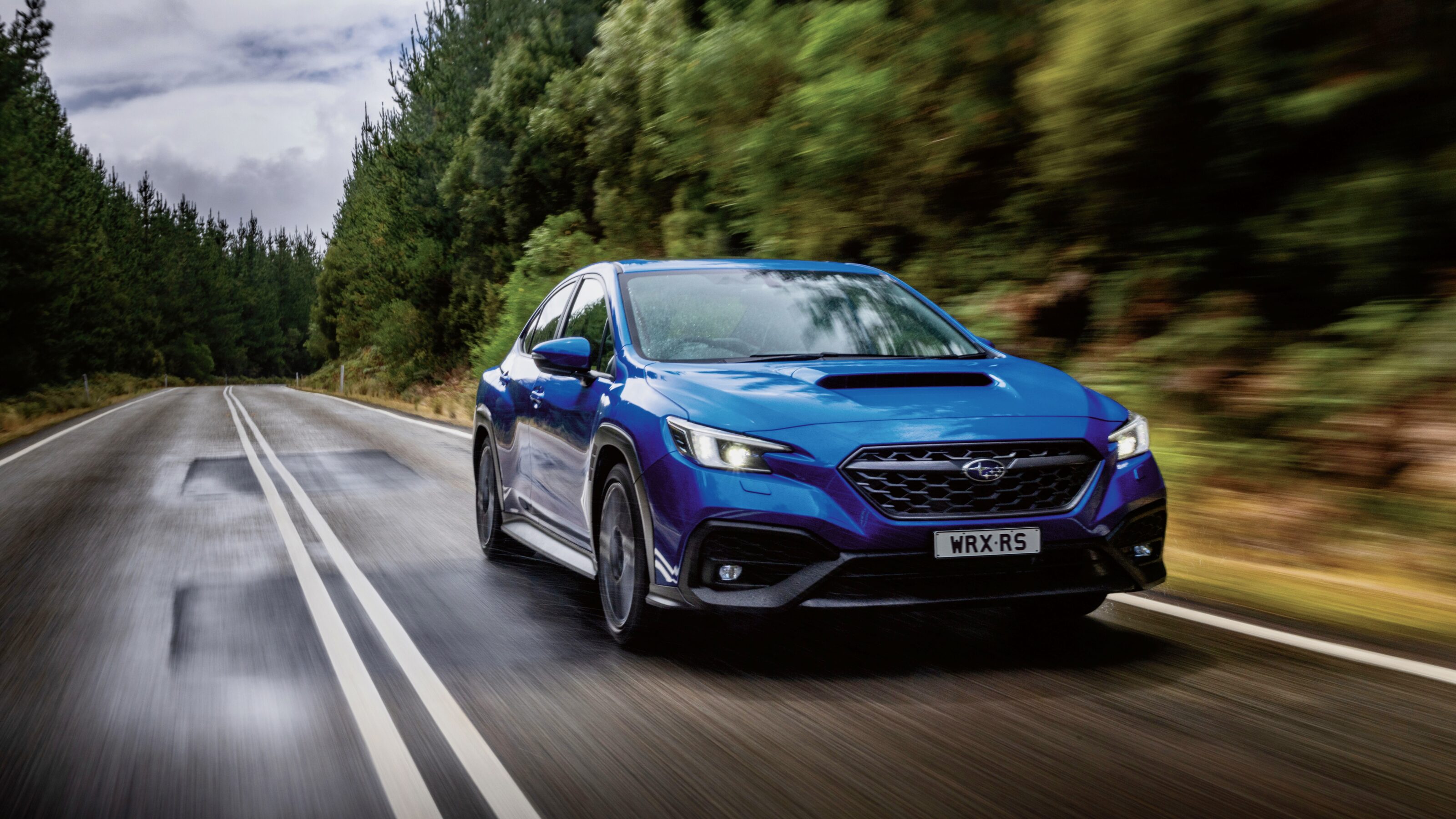
The WRX range has expanded with the new tS spec B sedan and remains available in both sedan and Sportswagon bodystyles. As for the lineup, the base WRX, mid-spec RS and top-spec tS are still available.
For new equipment, the whole WRX range now features a system called ‘Emergency Driving Stop’ that – with the active lane centering activated – will automatically and slowly stop the car if it detects an unresponsive driver.
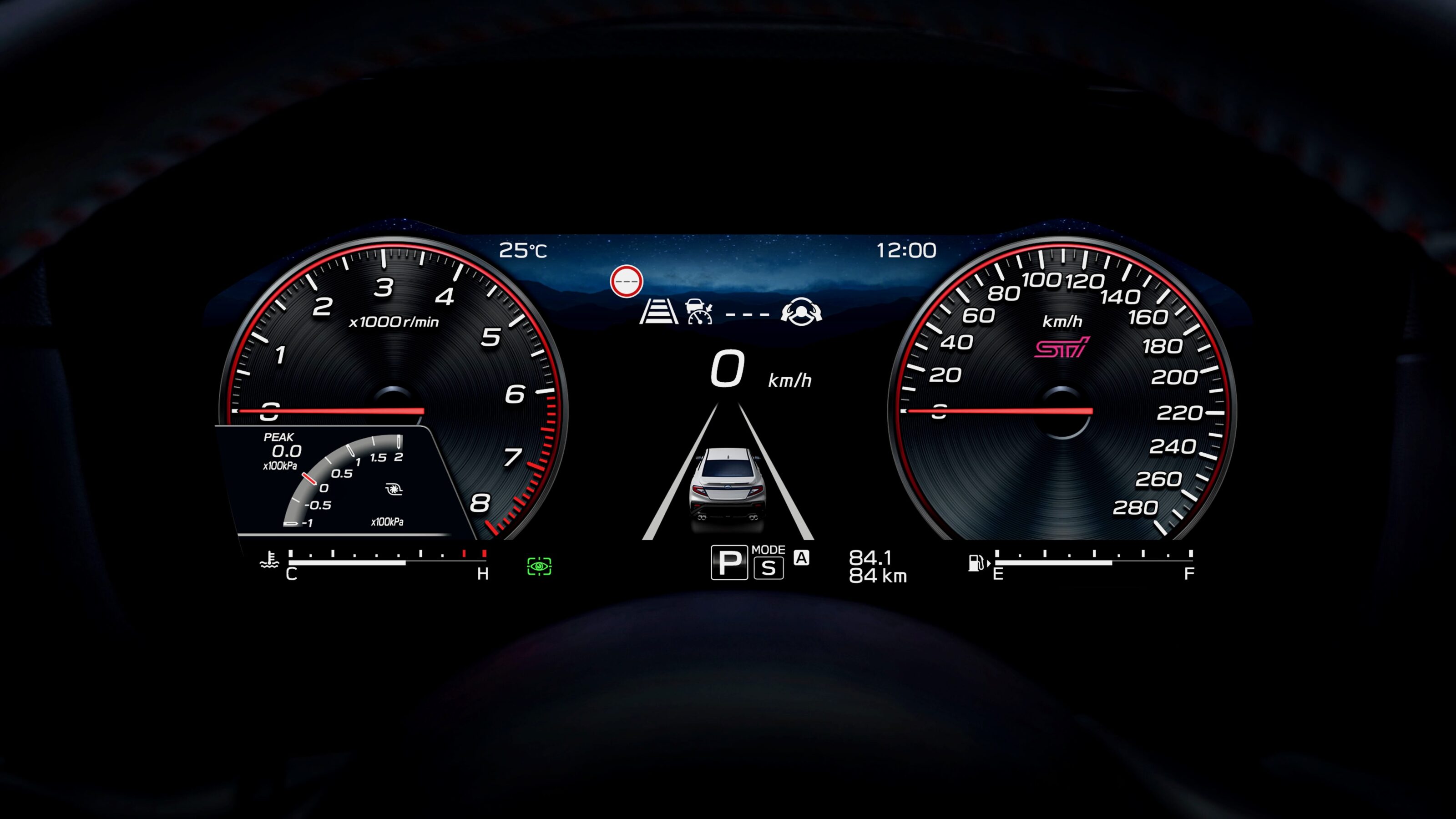
The top-spec tS models received the largest amount of equipment, including a new 12.3-inch digital driver’s display that’s the first of its kind in an Australian-spec Subaru model. Recaro front seats with driver’s eight-way power adjustment have also been added to tS models, as well as red ‘WRX’ embroidery on the dashboard of the tS sedans.
The interior roof and pillar trim in Sportswagon models has been updated from white to black to match the sedan, while the dark grey alloy wheels on the tS CVT now match the wheels on the mid-spec RS manual.
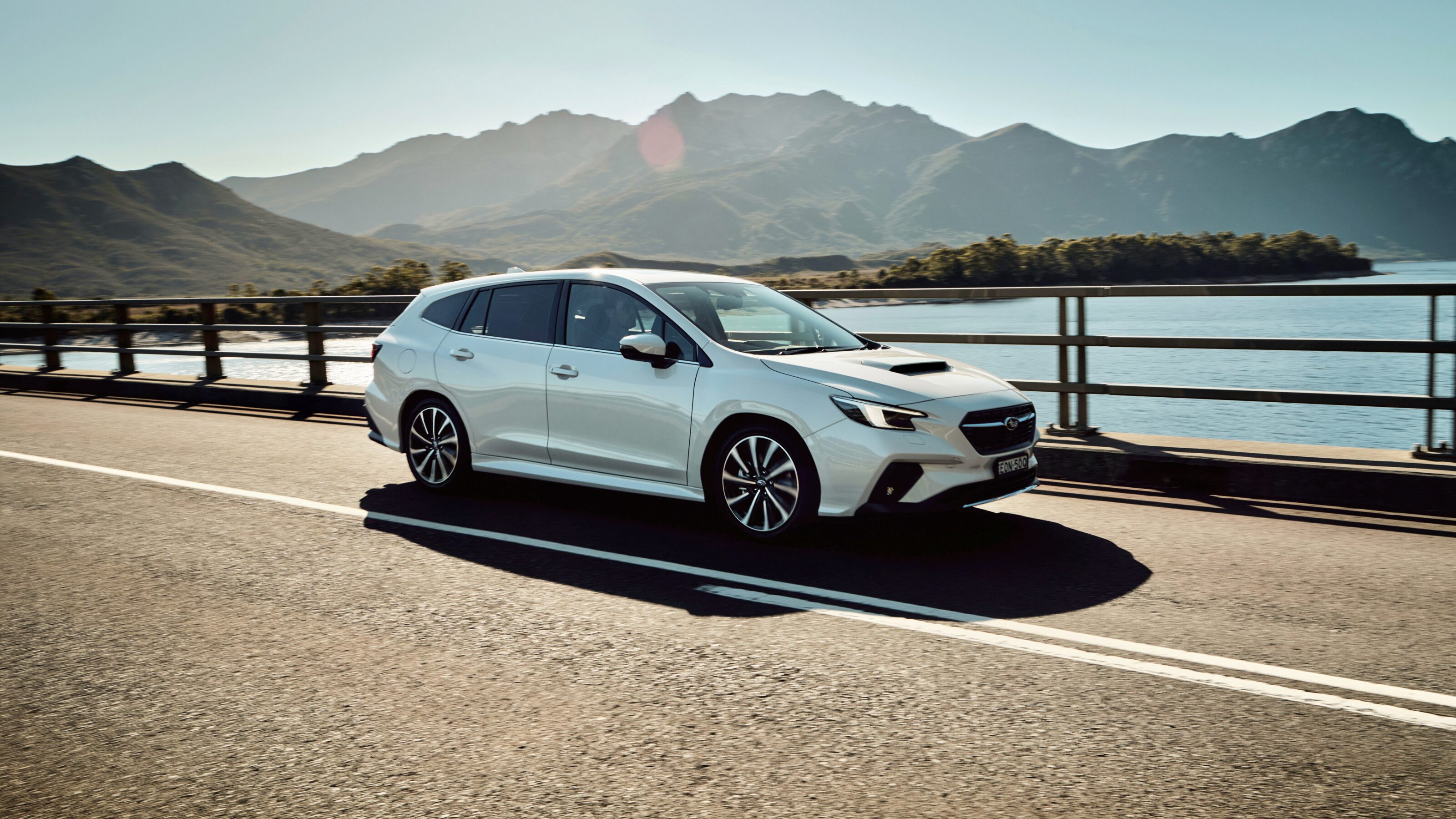
Finally, the former ‘Solar Orange’ colour has also been replaced with a new ‘Galaxy Purple’ hue.
Commenting on the MY25 WRX range, Subaru Australia’s General Manager, Scott Lawrence, said: “The 2025 WRX range, including the new hero WRX AWD tS Spec B model, delivers the perfect balance of raw performance and outstanding value – and the MY25 range takes that further with a suite of incredible new features.
2025 Subaru WRX pricing (plus on-road costs):
- WRX manual: $48,190
- WRX CVT: $50,690
- WRX RS manual: $53,490
- WRX RS CVT: $55,990
- WRX tS spec B manual: $61,490
- WRX tS CVT: $61,490
- WRX Sportswagon CVT: $52,290
- WRX Sportswagon RS CVT: $57,790
- WRX Sportswagon tS CVT: $63,290
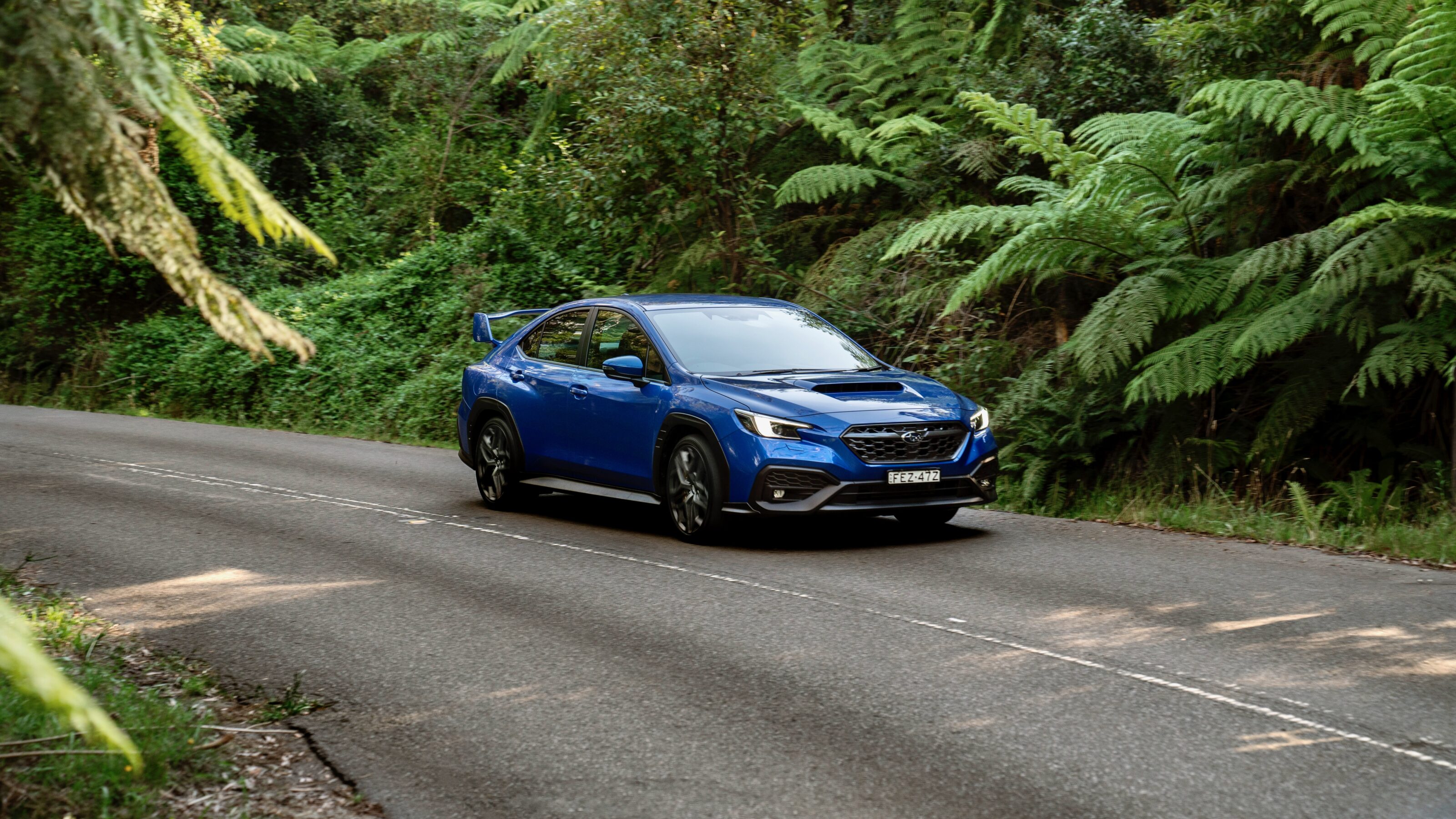
The updated Subaru WRX range is now available to order with local deliveries commencing soon.
You’d have thought that after 101 years of practice, Citroën would have cracked the Australian market by now. With that amount of experience, it would be a reasonable assumption that the French company would know what Aussie buyers wanted and how to price a car to sell here. But no. Emphatically no.
The longest continually operating automotive brand in these countries has left Australia, ceasing sales operations at the start of November. The 35 existing service centres will fulfil servicing operations, but for how long is open to question. It’s all rather sad.
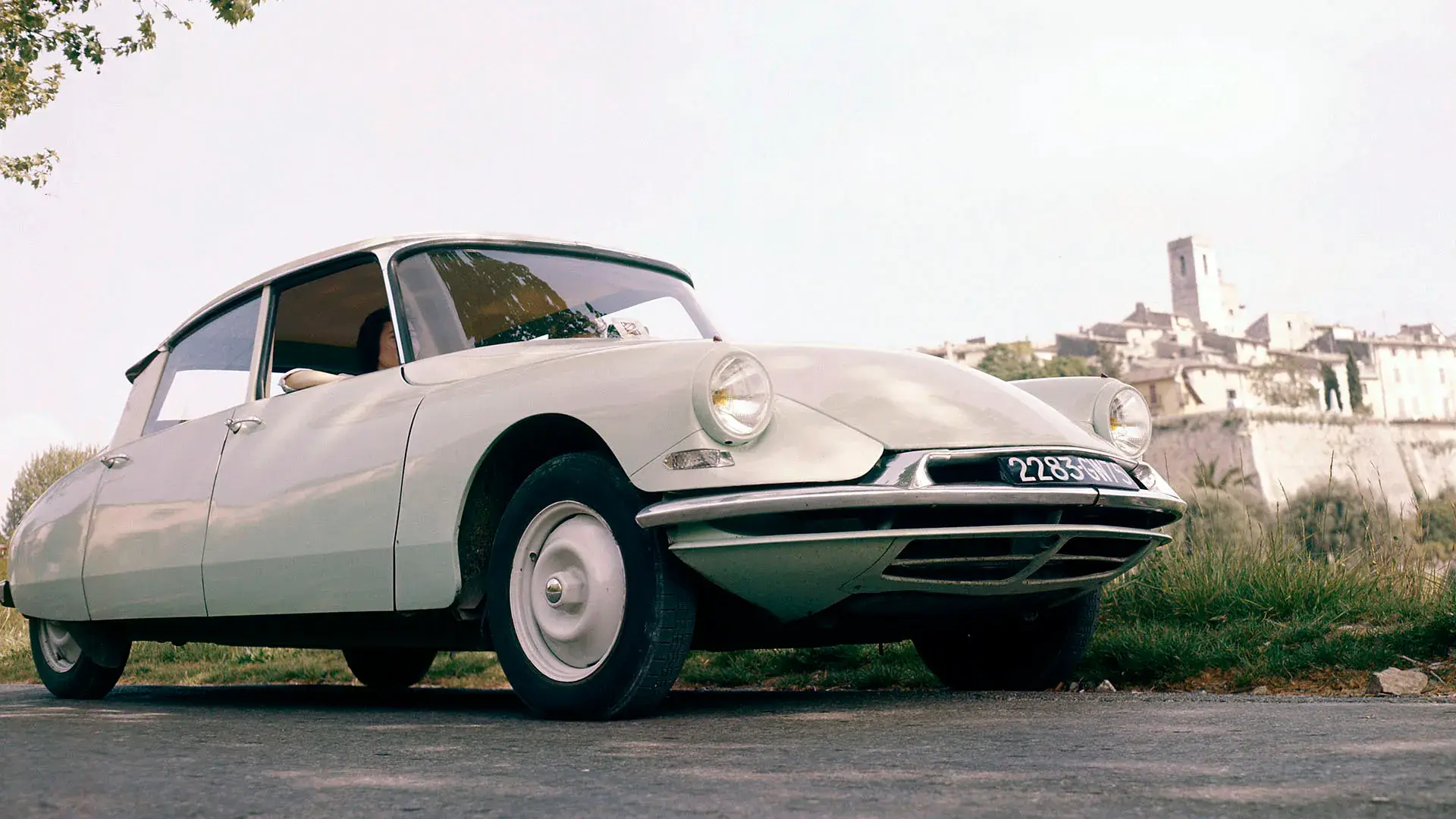
“Whilst we acknowledge and celebrate Citroën’s rich history in the Australian market, we must look to the future and consider the rapidly evolving, dynamic, and competitive nature of the industry and local market, alongside changing consumer demands,” said David Owen, Citroën Australia general manager.
“The decision for Citroën Australia to cease new vehicle sales was not made lightly; it was made after careful consideration of the current and future product available for our country, in the context of the local market and the preferences and requirements of Australian new vehicle buyers,” he explained.
The writing had been on the wall for some time. Citroën registered just 87 vehicles in the first half of 2024, fully 35 percent down on the same period the year before. As recently as 2007, the marque shifted 1741 vehicles in the first half of the year.
What’s more, the company had been making swingeing cuts to the prices of its existing stock, a fire sale that usually only points to one thing. Somewhat disconcertingly, those price cuts also applied to Peugeot models.
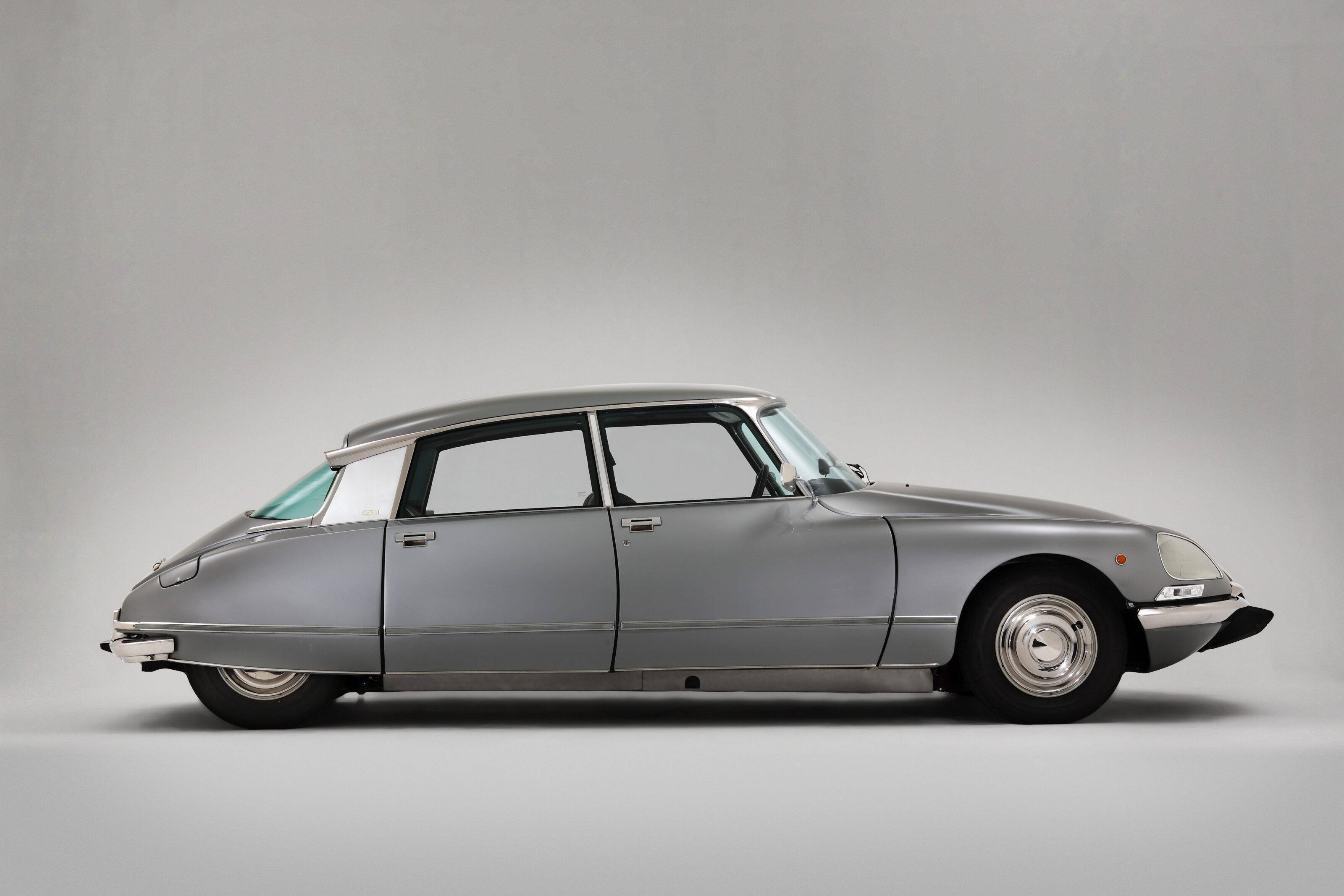
Where Peugeot still makes some decent numbers with its light commercials, Citroën sold just four passenger cars: the C3 hatch, the C4 crossover, the C5 Aircross SUV and the C5 X crossover wagon.
Initially pitching up in Australia a mere four years after the company was founded, Citroën even built cars here in Australia, with the stripped-out ID19 (see below) coming out of the Heidelberg factory.
Perhaps there was a sharp lesson to be learned for latter-day Citroën from that cost-conscious car. The last C4 retailed at $40K, powered by a 1.2-litre 114kW three-cylinder engine. By contrast, you could buy a Mazda 3 with a 139kW 2.5-litre four and a higher grade of trim for less. The French company had priced itself out of the market. Of course, the local importers would claim that macroeconomic factors overrode any requests they could make to head office in France, but the rot had set in a long time ago.
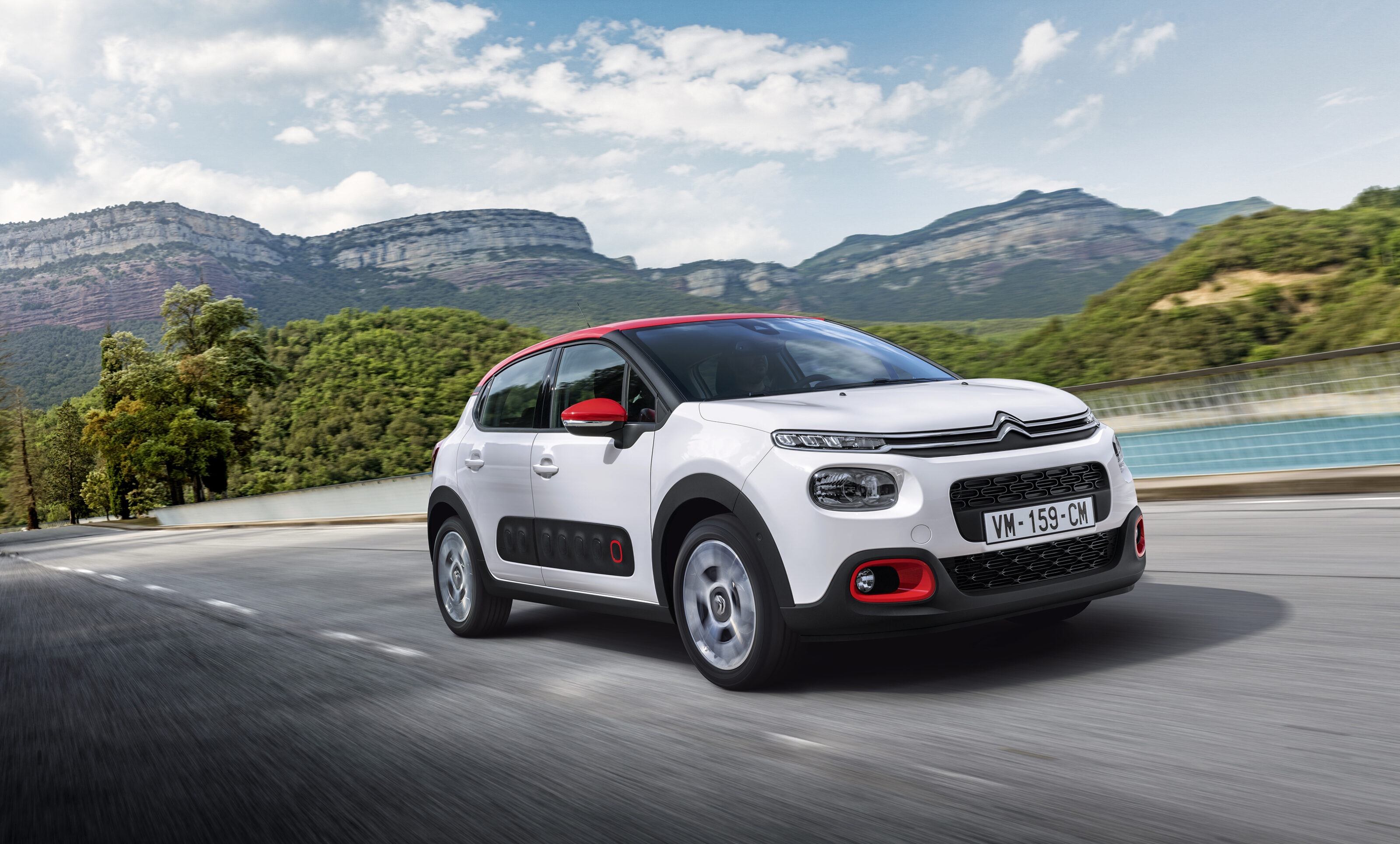
There are many brands that we wouldn’t miss were they to pack their bags and leave our shores.
Citroën isn’t one of them. Here’s hoping for a return at some point.
Aussie sales
2000 – 652
2001 – 1005
2002 – 1705
2003 – 2309
2004 – 2400
2005 – 3005
2006 – 3507
2007 – 3803
2008 – 2703
2009 – 1602
2010 – 1603
2011 – 1415
2012 – 1702
2013 – 1180
2014 – 1307
2015 – 1106
2016 – 965
2017 – 735
2018 – 494
2019 – 400
2020 – 203
2021 – 175
2022 – 296
2023 – 228
2024 (to July) – 87* (down 35.6%)
Straight Outta Heidelberg
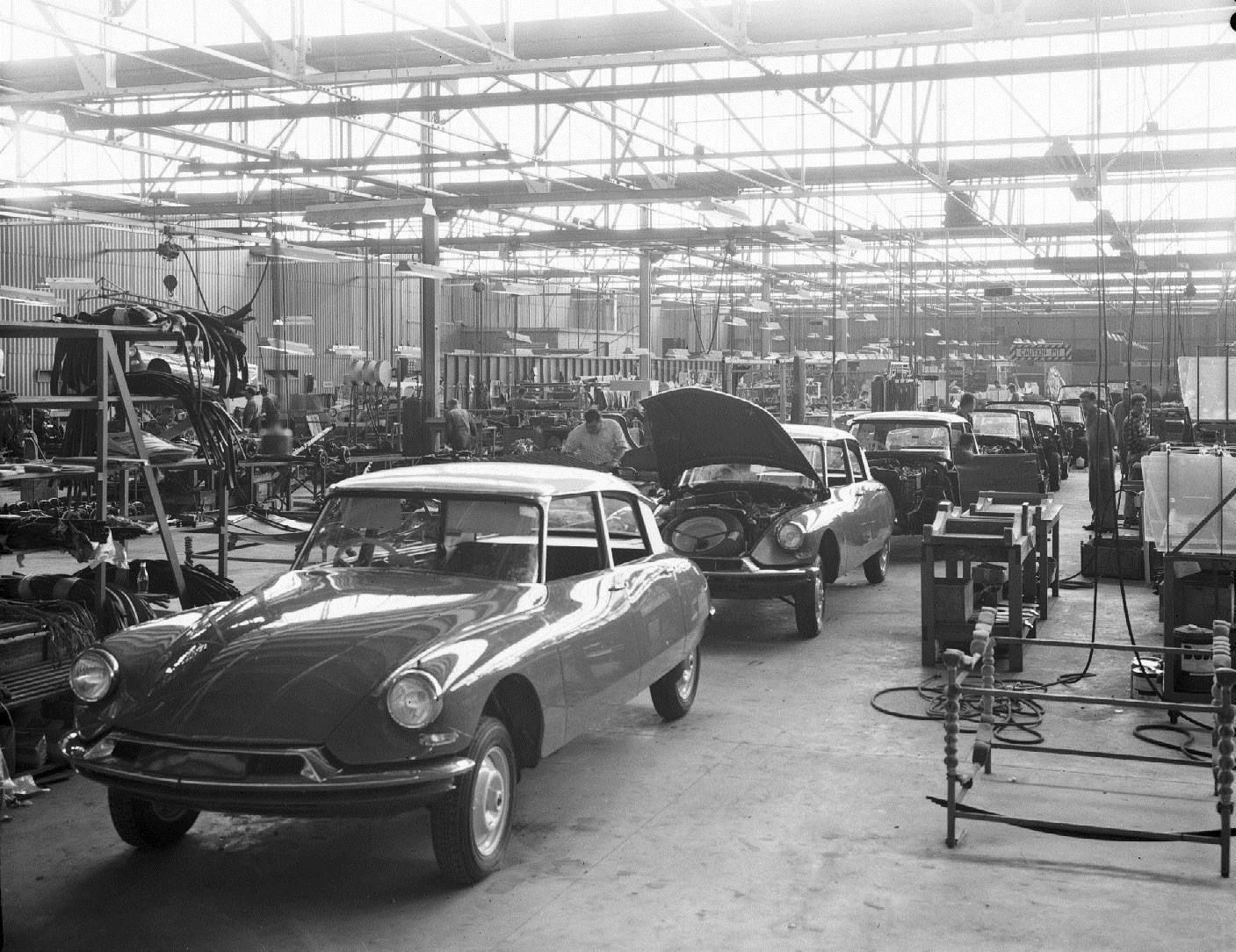
The Heidelberg plant in Melbourne was responsible for assembling the ID19 – a more proletarian version of the iconic DS – between 1960 and 1966. In order to make it price competitive, Citroën simplified the DS by deleting the power steering, replacing the ‘button’ brake pedal with a pendant pedal and stripping all brightwork. As a result, the still-hydropneumatic ID19, dubbed Parisienne here, had the shape but not the luxury of the Diesse, and the 1250 units that were built here, at a list price of £1698, were a comparative bargain.
Things we like
- Better quality, more functional interior; more useable spread of both power and torque; ride quality improved over Mk8
Not so much
- Media interface better but still not great; no manual gearbox option
The burden of expectation weighed heavily on the eighth-generation Volkswagen Golf GTI, as the slightly unusual circumstances of this review demonstrate. Our first chance to try this updated ‘8.5’ model comes on a road trip to Wolfsburg for the inaugural GTI Fest. As well as the newest model, Volkswagen wheeled out examples of its seven predecessors. And, well, would you take a pre-facelift eighth-gen GTI over its incredible 7.5 predecessor?
Me neither. Consider the Mk8 GTI in isolation and it’s still a really, really good car, but it wasn’t that perfect, intoxicating mix of performance, practicality and everyday useability. The infotainment system suffered from glitches and had that stupid unilluminated slider, while VW’s decision to firm up the suspension to focus more on performance resulted in a slightly harder and less balanced machine. It was really good, but a Golf GTI badge is supposed to mean ‘great’.
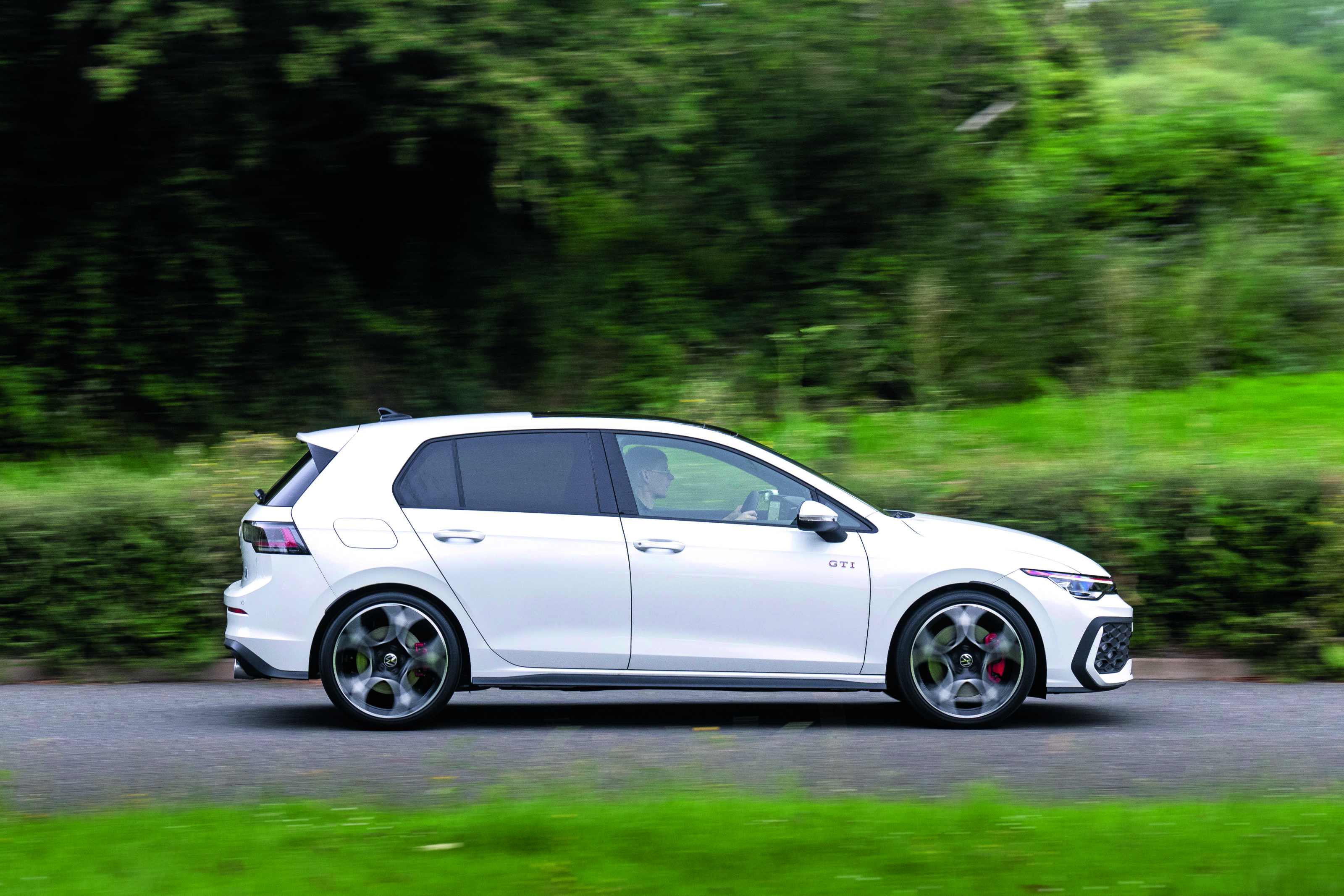
Still, it’s often with the mid-life facelift that a Golf GTI really comes alive. Perhaps it’s because GTIs are all about balance, so it takes the finessing that comes with the half-generation update to really hone an everyday performance classic.
You wouldn’t know much has changed from the outside: there are new LED lights front and rear, new optional 19-inch wheels with a design inspired by the Mk5 GTI (which we like) and an illuminated front VW roundel (which… well, if you must).
Inside, the changes are more meaningful and will be familiar if you have read our reviews of other facelifted versions of the Golf that use the updated MEB Evo platform.
There’s a new 12.9-inch touchscreen running the latest version of VW’s infotainment. The OS is better designed, with key controls fixed at the top and bottom of the screen (which, again, we like). Meanwhile, the touch slider beneath the screen is illuminated, although we would still prefer a physical volume knob.
There are actual buttons on the perforated leather steering wheel – thank you, VW – although the angle of them didn’t quite gel with the way I gripped the wheel.
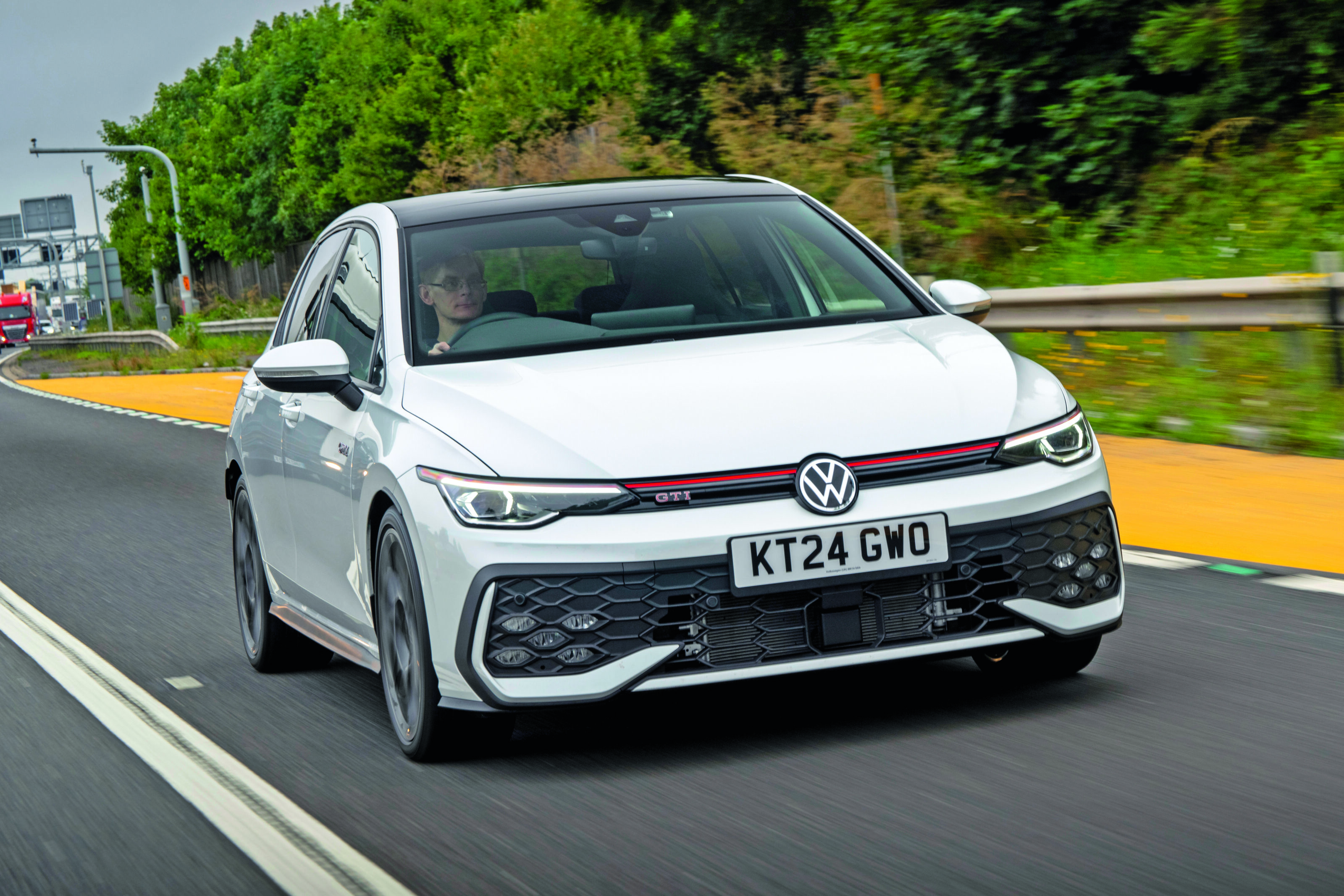
Improving the useability and quality of the infotainment is a significant step, but since this is a Golf GTI, you will want, and expect, more. So Volkswagen has given the venerable EA888 2.0-litre turbocharged unit a tune and drawn out an extra 15kW, raising total output to a healthy 195kW.
The GTI has never been about outright power, though – its output remains positively demure compared with some rivals – but it’s a welcome boost. What isn’t so welcome is the absence of a manual gearbox: the GTI is now offered only with a seven-speed dual-clutch. Don’t worry, there are still tartan seats if you want them.
The suspension set-up is mechanically the same as the previous model’s (struts up front and a multi-link rear axle), but there has been significant work on the electronic front-axle differential lock, progressive steering and, in particular, the optional Dynamic Chassis Control. The latter works in conjunction with the various drive modes to adjust the suspension and alter the car’s performance, and it provides a notable difference from the pre-facelift model.
Broadly, the DCC-equipped Golf GTI is now more pliant and useable than the 8 (if not the 7.5) in Normal mode, making it a little softer on uneven surfaces and bumps. Stick it in Sport and things stiffen up considerably, which is welcome when you find smoother, more enjoyable roads. The broader performance window means there’s less compromise between hot hatch and daily driver: the whole GTI ethos is about having a performance car you can use every day.
The extra power is notable, and while peak torque remains at 370Nm, it’s now accessible all the way between 1600 and 4590rpm. It makes things more responsive and enjoyable but without getting into the rarefied air of superhatches such as the all-wheel-drive Golf R. And VW’s DSG ’box is still brilliantly smooth, at least.
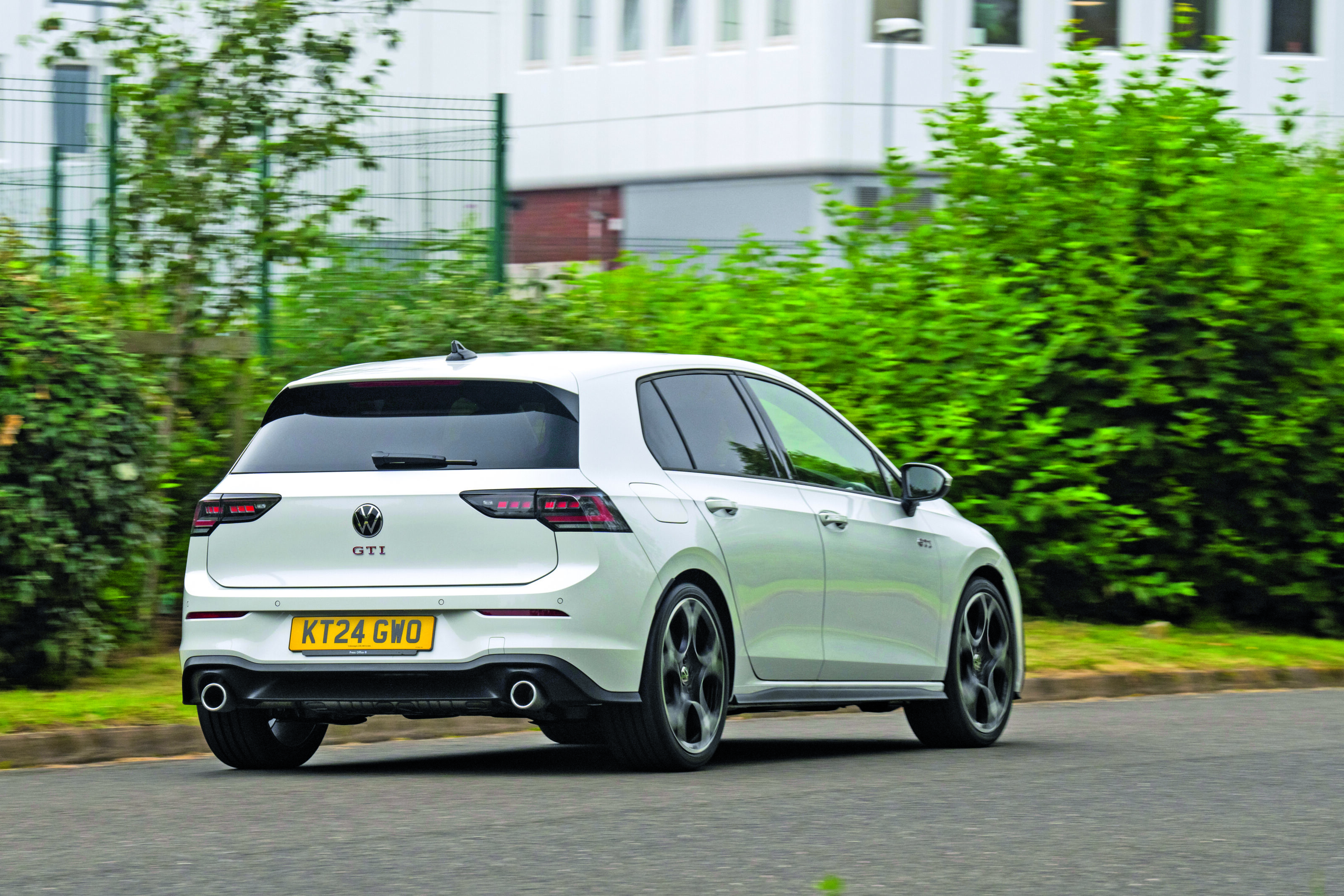
The interior remains comfortable and well laid out, and while the revised infotainment still isn’t entirely glitch-free, it’s a step forward. It’s a lot of small changes that add up to a discernible and welcome improvement, returning the Golf GTI to the ‘everyday performance’ window in which it has thrived for so long – although, with prices said to be close to the outgoing car’s $59,990 drive-away mark, it’s not exactly an affordable everyday hero.
Progress, then, with more of the balance the Golf GTI is known for, even if some of the interior tech, the ride and the lack of a manual ’box mean the blend perhaps isn’t perfect given the lofty expectations.
So would you still take a 7.5 GTI on a long road trip over this one? It’s at least a tougher call now.
Specifications
| Model | Volkswagen Golf GTI |
|---|---|
| Engine | 1984cc 4cyl, dohc, 16v, turbo |
| Max power | 195kW @ 6500rpm |
| Max torque | 370Nm @ 1600-4590rpm |
| Transmission | 7-speed dual-clutch |
| Weight | 1454kg |
| 0-100km/h | 5.9sec (claimed) |
| Price | $59,990 drive away |
| On sale | Now |
Ahead of its final 18 months of production for Australia before the new model launches in late 2026, Nissan has updated the popular Y62 Patrol large SUV with a new dashboard and more technology across the range – including the off-road Warrior by Premcar version.
Priced from $90,600 plus on-road costs, the entry price of the Patrol has climbed by $1,340 though the Ti L and Warrior pricing has only risen by $140 to $102,100 and $105,520 respectively.
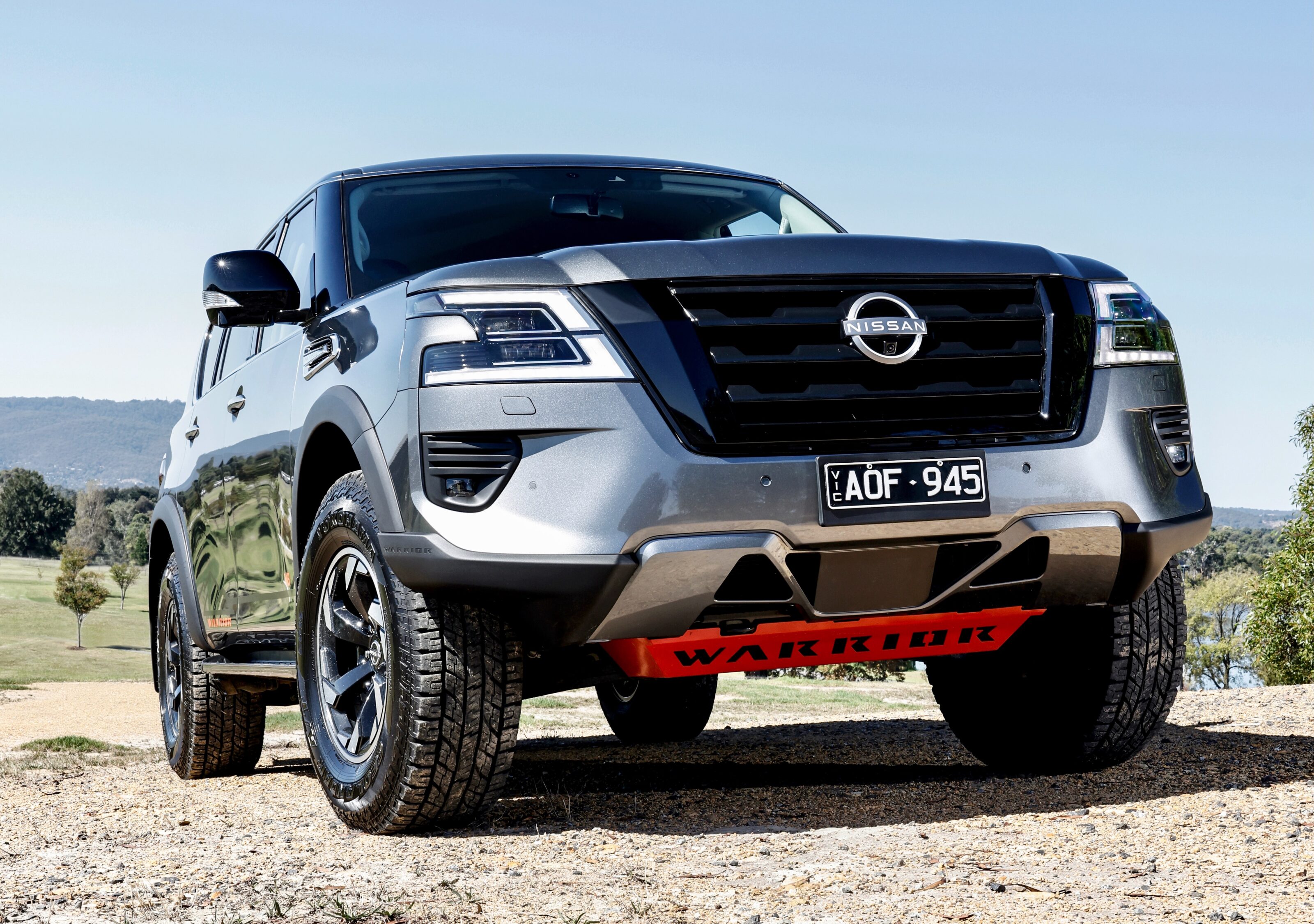
Central to the update is a new dashboard layout that debuted on left-hand drive Patrol models more than five years ago, which adds a new 12.3-inch touchscreen and a 7.0-inch colour screen in the driver’s display.
The new touchscreen is also fitted to other Nissan products like the Qashqai and X-Trail, and features wireless and wired Apple CarPlay and Android Auto, satellite navigation and DAB+ digital radio – plus a new 360-degree camera with a new off-road mode for off-road driving.
The new touchscreen also replaces the current 10.1-inch aftermarket screen, which was introduced last year and removed features such as the satellite navigation, 360-degree camera and Bose sound system – the former is now standard across the range and the latter has been re-introduced to the top-spec Ti L.
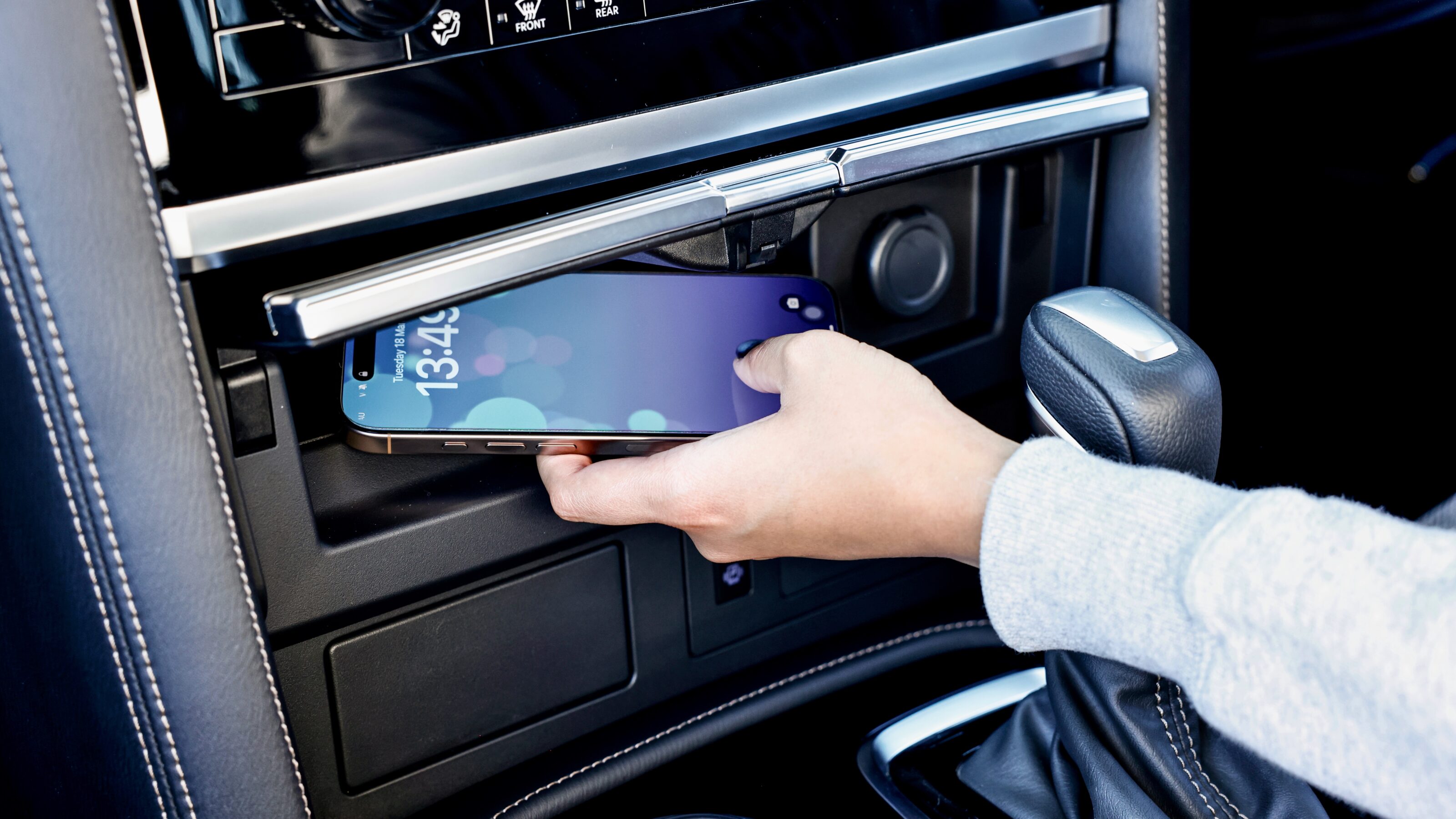
The Ti L has also gained a central cool box and an ‘enhanced’ digital rear view mirror, while the Warrior now includes side steps. A new ‘Desert Red Metallic’ colour has joined the range with ‘Gun Metallic’, ‘Moonstone White’, ‘Brilliant Silver’ and ‘Black Obsidian’ also available.
There have been no mechanical changes to the 298kW/560Nm 5.6-litre petrol V8 engine, which is still mated to a seven-speed automatic transmission and a full-time four-wheel drive system.
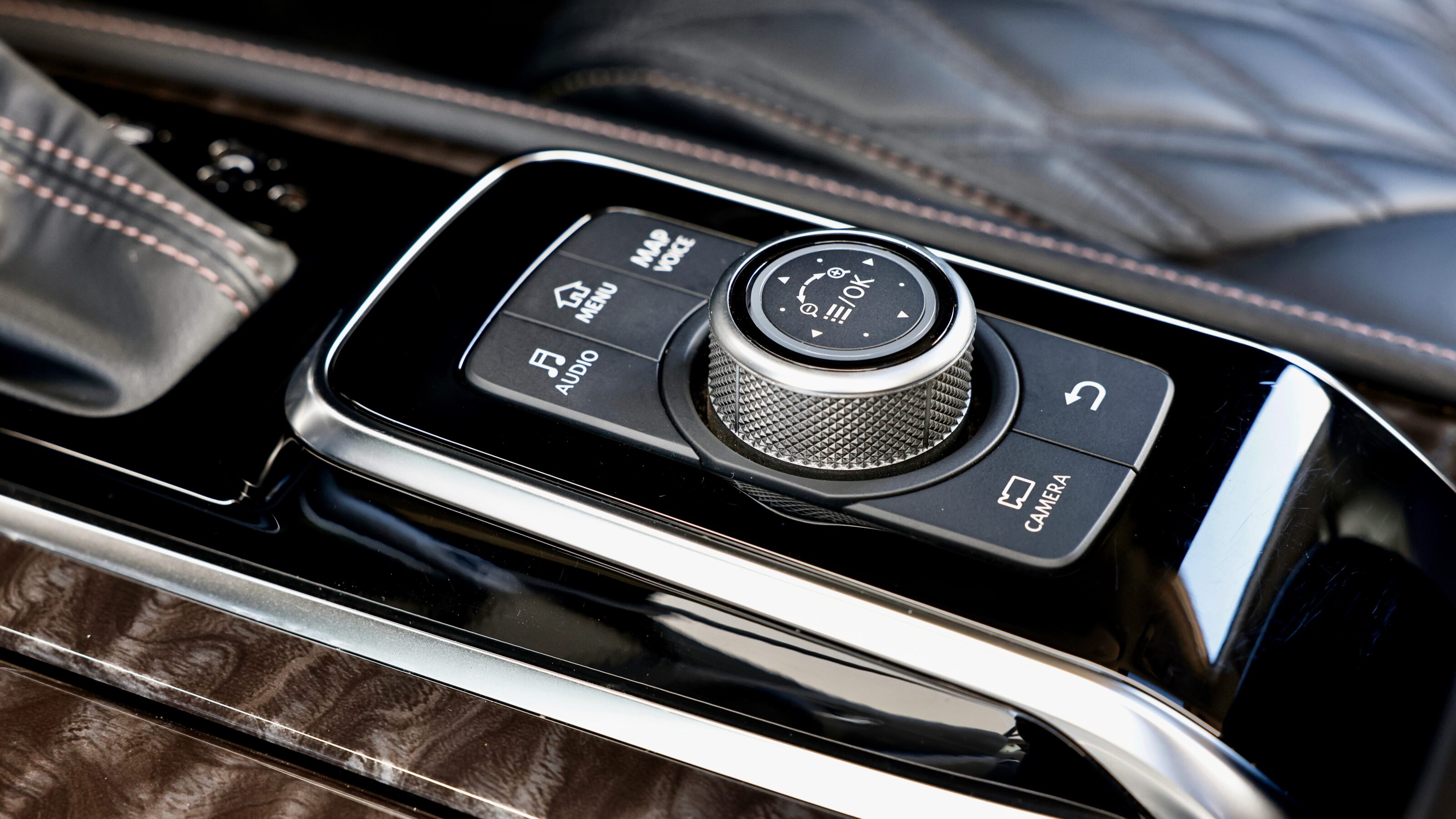
MY25 Nissan Patrol pricing (plus on-road costs):
- Ti: $90,600
- Ti L: $102,100
- Warrior: $105,660
MY25 Nissan Patrol Ti standard features:
- 18-inch alloy wheels
- Dusk- and rain-sensing automatic LED headlights
- Rain-sensing automatic wipers
- Keyless entry with push button start
- Rear limited-slip differential
- Hill descent control
- Electric-folding/heated mirrors
- Leather upholstery
- 10-way electric driver’s seat and eight-way electric front passenger seat
- Dual-zone automatic climate control
- 12.3-inch touchscreen
- Wireless/wired Apple CarPlay and Android Auto
- Satellite navigation
- Six-speaker sound system
- 7.0-inch digital driver’s display
- Wireless phone charger
- Autonomous emergency braking (AEB)
- Adaptive cruise control
- Lane keeping assistance
- Blind-spot monitoring with rear cross-traffic alert
- Front and rear parking sensors
- 360-degree camera
Patrol Ti L adds to Ti:
- Driver’s seat memory
- Sunroof
- Puddle lamps
- Heated and ventilated front seats
- 13-speaker Bose sound system
- Roof rails
- Electric steering column adjustment
- First row centre cool box
- Digital rear mirror
Patrol Warrior adds (to Ti):
- Unique wheel, tyre and suspension package with 50mm total lift
- Re-engineered hydraulic body motion control system
- New front and rear springs, and rear bump stops
- Tow bar
- 120kg GVM upgrade
- Unique 18-inch alloy wheels and all-terrain tyres
- 2.5mm thick steel red bash plate
- Black exterior grille and mirror caps
- Bi-modal exhaust
- Black interior colour theme
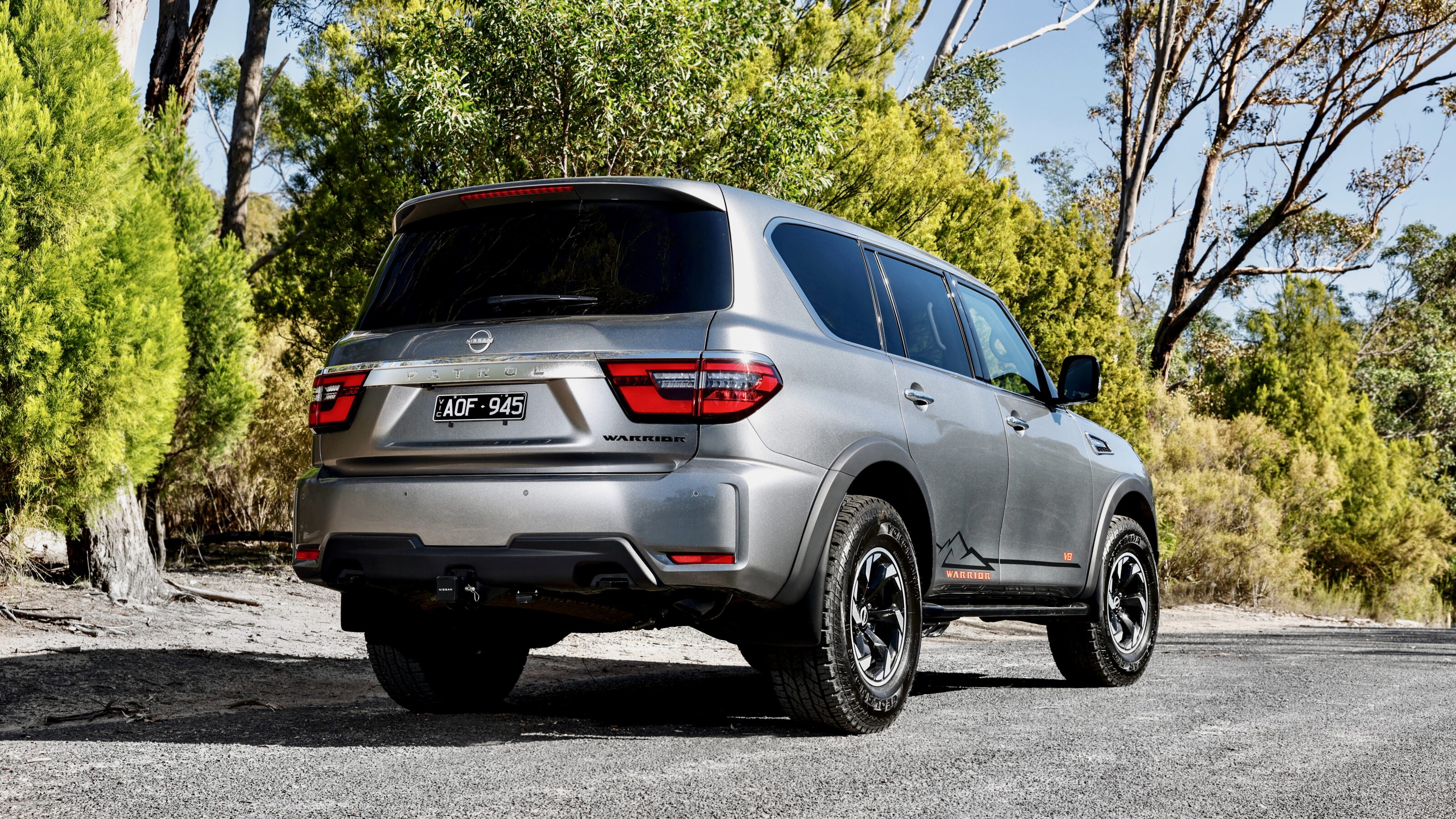
The updated Nissan Patrol will reach Nissan dealerships soon. For more on the homegrown success story of Premcar, check the profile on CEO Bernie Quinn in the April 2025 issue of Wheels.
After a long and drawn-out teaser campaign, the Kia Tasman has been revealed and has the potential to be one of the most important new entries into the intensely competitive dual-cab ute market in many years.
Kia is planning to deliver 10,000 to 11,000 Tasmans in Australia this year, ramping up to 20,000 next year, with first deliveries expected to commence in July.
It has a steep climb ahead if it is to realise Kia’s lofty ambitions, so here’s everything we currently know about the Tasman.
Jump Ahead
- March 2025: Second Kia Tasman ad released
- February 2025: International pricing hints at Kia Tasman’s local cost
- October 2024: 2025 Kia Tasman ute makes global debut
- August 2024: Kia Tasman spied undergoing local testing
- July 2024: Documentary to showcase Kia Tasman’s Australian testing
- March 2024: Kia Tasman officially confirmed in star-studded video
- June 2023: New Kia dual-cab confirmed, Tasman name likely
March 2025: Second Kia Tasman ad released
Kia Australia has launched a new ad campaign for its upcoming Tasman ute, which debuted at yesterday’s season debut NRL match.
Created as a follow up to the high-rotation ‘Kia’s Getting A Ute’ ad that aired in March 2024, the new commercial once again features some of Australia’s biggest sporting legends, as well as Buck the Brisbane Broncos mascot. Buddy Franklin, Darren Lockyer, Alfie Langer, Steve Waugh and Dylan Alcott all make appearances.
Unlike the first one, it features full exterior and interior footage of the now-revealed Tasman.
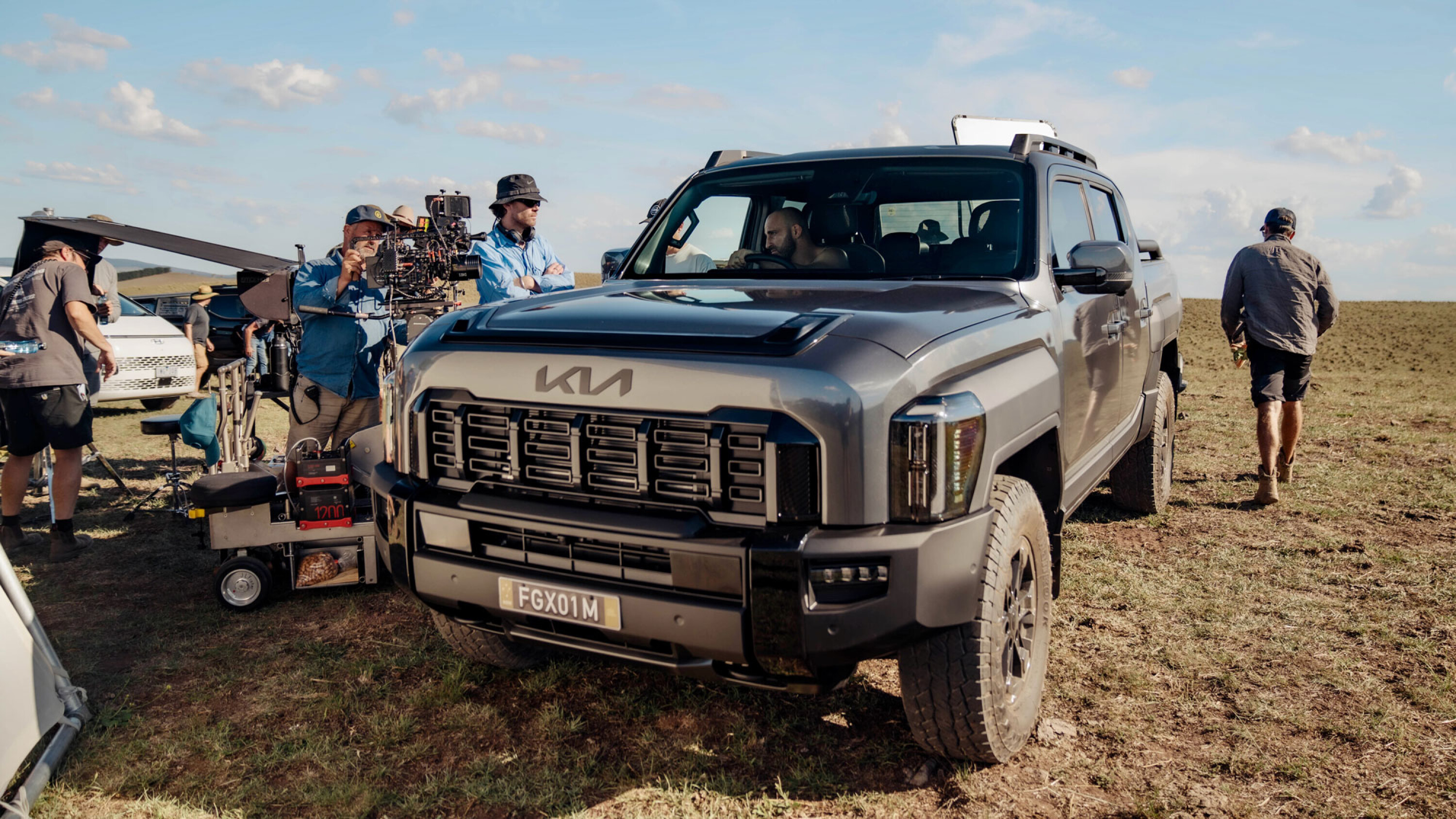
The latest ad is, like the Tasman, homegrown. Much of the new ute’s development was done in Australia. According to the company, from concept design, naming decisions, focus group studies and benchmarking tests, Kia Australia played a pivotal role in shaping the Tasman, ensuring it meets the demands of our market.
As we’ve come to expect from Kia, the Tasman will feature a local ride and handling tune to further adapt it to our conditions.
The Tasman range will be powered by the same 2.2-litre four-cylinder turbo-diesel engine seen in the Sorento SUV, 154kW/440Nm outputs and mated to an eight-speed torque converter automatic transmission.
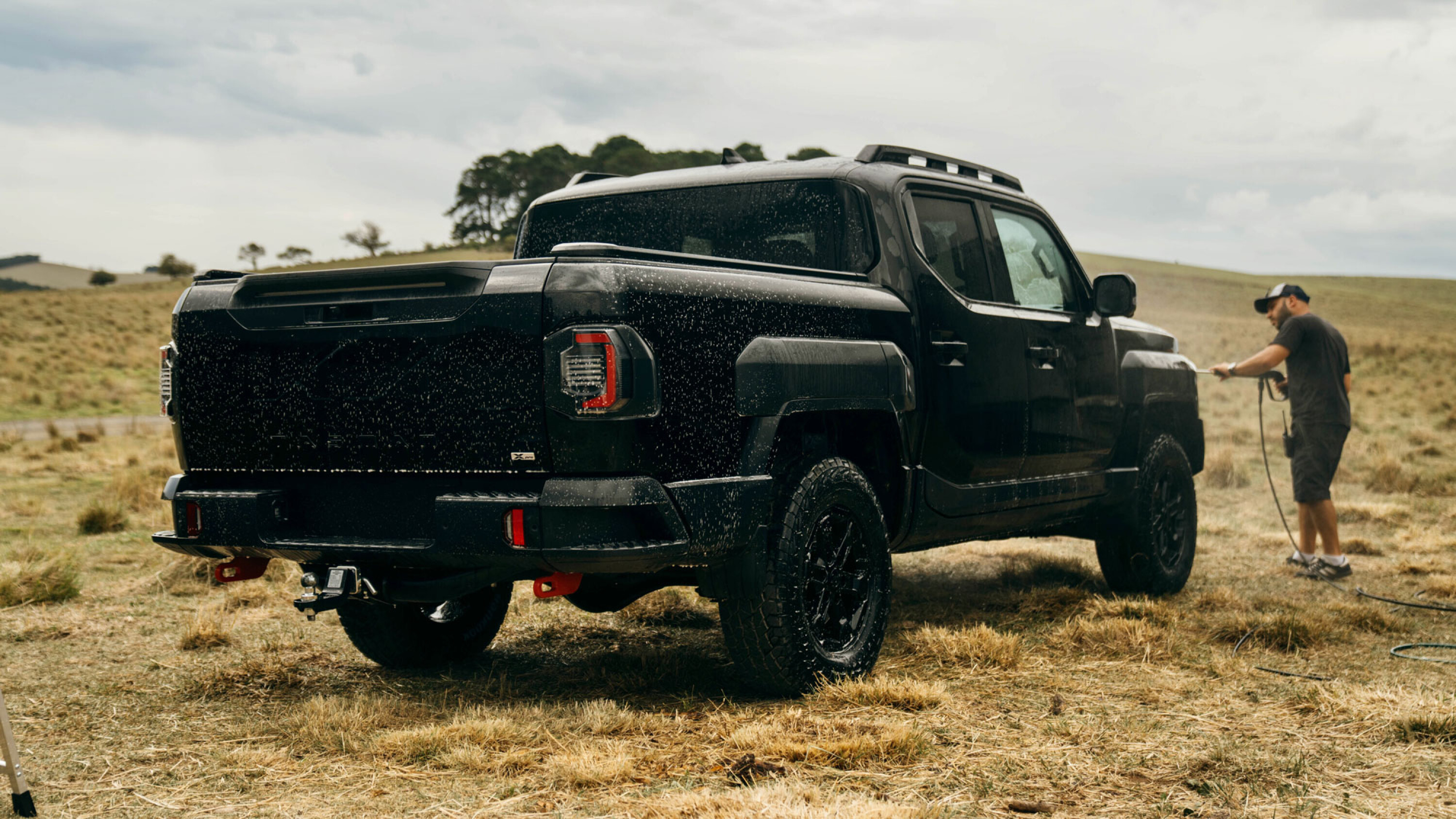
It will also be capable of towing a 3,500kg braked trailer, a one-tonne payload and even feature an integrated brake trailer controller – all features that Kia describes as “non-negotiable”.
Its four-wheel drive system will include a low-range transfer case, rear differential lock, and an intelligent traction control system to deliver “exceptional capability for serious off-road adventures”.
It will be available in dual pick up, double cab chassis and single cab chassis body styles with combinations of various trims across two- and four-wheel drive drivetrains.
February 2025: International pricing hints at Kia Tasman’s local cost
Korean pricing has been revealed for the Kia Tasman, providing the first indication of how much the brand’s first dual-cab will cost. While shipping and local homologation costs mean the figures aren’t directly comparable, it at least provides a ballpark.
In its native market, the four-tier range starts at 37.5 million won (~AU$42,000), followed by the Adventure at 41,1 million won (~AU$46,000), increasing to 44.9 million won (~AU$50,000) for the Extreme and topping out at 52.4 million (~AU$59,000) for the X-Pro.
Of those four, only the X-Pro nameplate will make it to Australia and given local buyers’ propensity for higher-spec models it is likely to be a popular choice.
That AU$59,000 figure does give Kia Australia some wiggle room when compared to rivals like the Ford Ranger Wildtrak ($69,690 +ORCs), Toyota Hilux Rogue ($71,530 +ORCs) and Mazda BT-50 SP ($71,500 +ORCs) and puts it in a very similar ballpark to the Isuzu D-Max X-Terrain ($67,990 driveaway) and Mitsubishi Triton GSR ($63,840 +ORCs).
Official pricing will be confirmed closer to the Kia Tasman’s local launch.
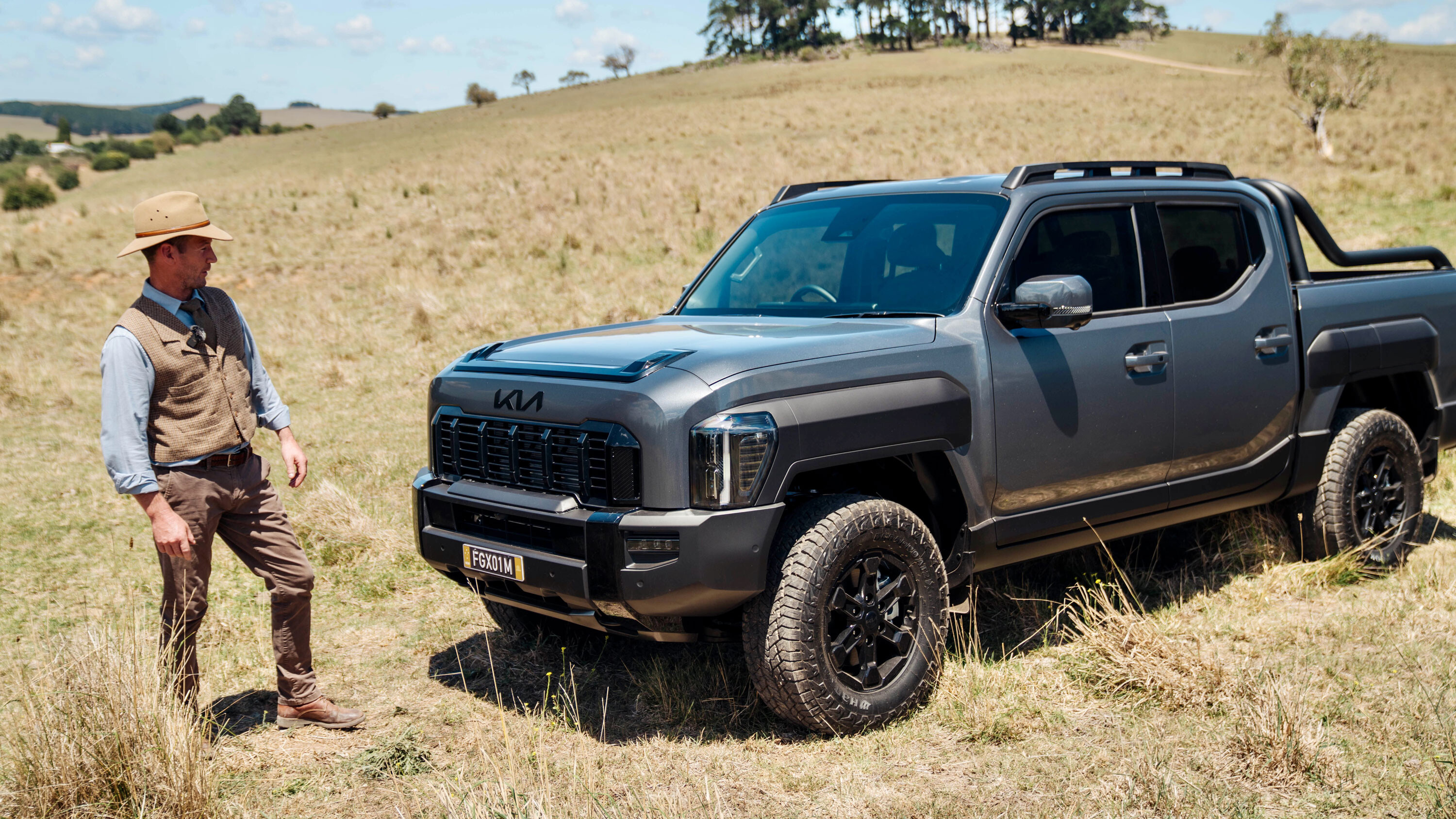
October 2024: 2025 Kia Tasman ute makes global debut
The hotly anticipated Kia Tasman ute has finally made its official debut at the Jeddah Motor Show in the Middle East. It will launch in its native Korea in the first half of 2025 and then make its way to Australia, likely by year’s end.
There’s little that’s controversial about the Tasman’s mechanical makeup. It’s powered by a 2.2-litre four-cylinder turbodiesel producing 154kW/441Nm through an eight-speed automatic.
Full-time all-wheel drive is standard on the higher X-Line and X-Pro variants but optional on the entry-level Baseline.
The independent double-wishbone front end is teamed with the live-axle, leaf-sprung rear and the dampers use Sensitive Damper Control and Hydraulic Rebound Stop technology claimed to improve body control.
What is more controversial is the design, a departure from the dual-cab norm with its slim vertical headlights, accentuated grille and blacked-out over fenders. Karim Habib, the Executive Vice President and Head of Kia Global Design, described it as: “Solid and capable, its design beings with an honest form, using simple and rugged elements to capture a spirit of practicality.”
Single- and dual-cab bodies will be offered as well as cab-chassis variants along with a quartet of bed options: single decker, double decker, sports bar and ladder rack. The bed measures 1512mm long, 1572mm wide and 540mm deep with 1186mm between the wheel arches, with up to 1195kg of payload and a maximum braked towing capacity of 3500kg.
The X-Pro is intended as a more off-road focused variant, with smaller 17-inch wheels (down from the 18s of the lesser variants) and all-terrain tyres, more ground clearance, a locking rear diff and an X-Trek mode that offers low-speed off-road cruise control.
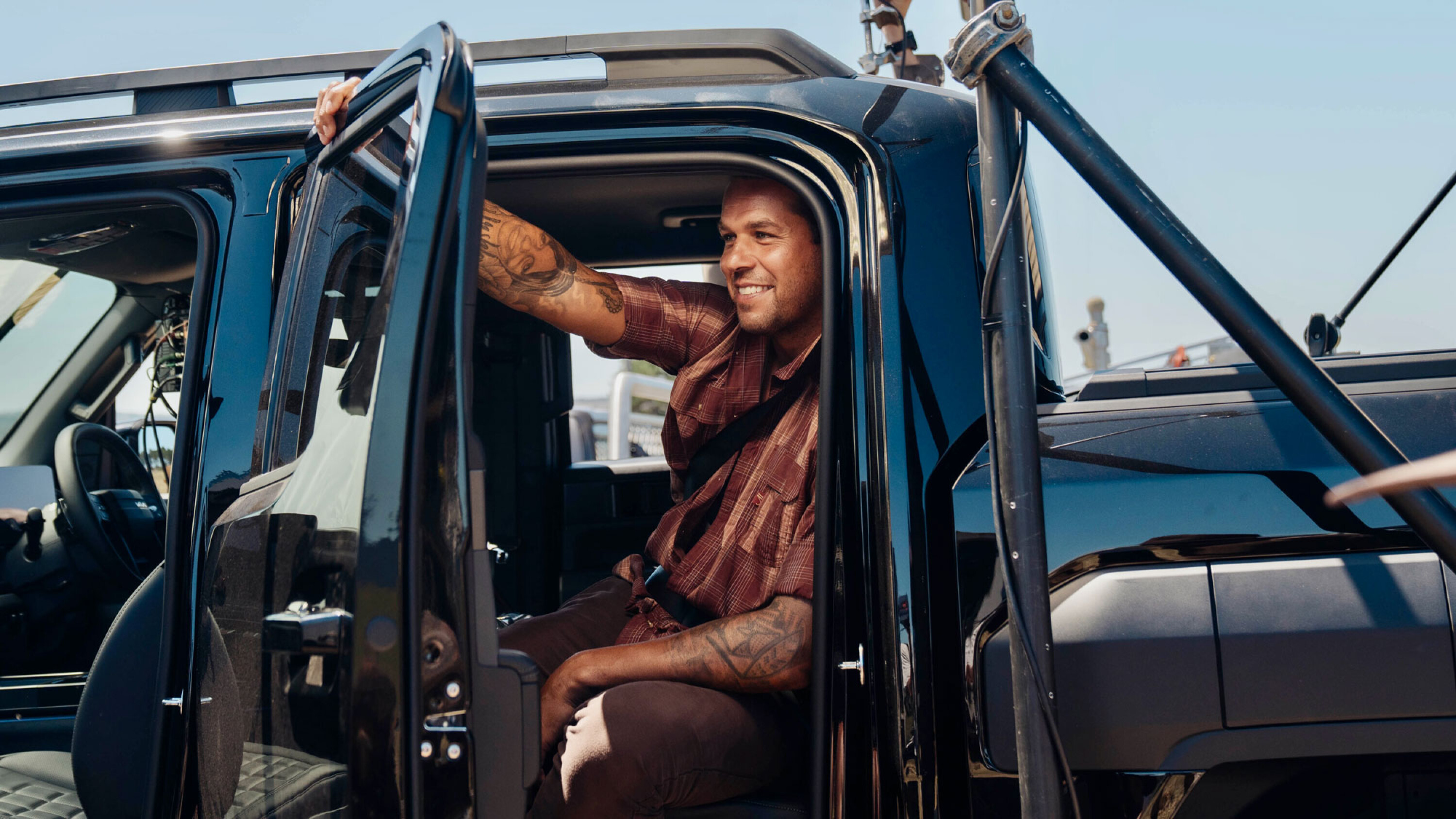
Where the Kia Tasman is attempting to differentiate itself from its many dual-cab rivals is inside, with a more passenger car-like interior including widescreen (12.3 + 5.0 + 12.3-inch screens) displays, an eight-speaker Harmon Kardon stereo, dual wireless charging pads, reclinable rear seats and multiple storage options.
A comprehensive suite of active safety aids will be standard, including remote parking assist, as well as a Ground View Monitor allowing drivers to see the road ‘through’ the bonnet when driving off road.
Nine colours will be available and Kia will also offer a range of factory-backed accessories including sidesteps and beadlock-capable wheels.
August 2024: Kia Tasman spied undergoing local testing
As we await the official reveal in the second half of 2024, development testing continues with the new Kia Tasman ute.
Quick-thinking reader Clive Williams snapped these shots of a heavily disguised Tasman completing towing durability work in far-western New South Wales near the Mungo National Park.
If it’s to be competitive with the Ford Ranger, Toyota Hilux, Isuzu D-Max and others the Tasman will need a maximum braked towing capacity of 3500kg.
July 2024: Documentary to showcase Kia Tasman’s Australian testing
Kia has teased an upcoming documentary series entitled ‘One More Round’ that showcases the Tasman dual-cab ute testing in the Australian wilderness.
Running from July-October, the series will take a behind-the-scenes look at the grueling testing program, including interviews with the development team, with episodes focusing on off-road testing, deep-water wading, all-terrain durability, towing, on-track performance and ride and handling.
The series is intended to build anticipation ahead of the Tasman’s reveal in the second half of 2024, ahead of a 2025 launch.
March 2024: Kia Tasman officially confirmed in star-studded video
A new TV commercial has been released confirming Tasman as the name of Kia’s forthcoming dual-cab ute. The big budget ad, that stars a who’s who of Australian sporting legends, closes with the words: “Kia Tasman ute. Arrival 2025.”
This follows an earlier teaser commercial that dropped plenty of hints that Tasman would be the name chosen without ever explicitly confirming it.

Engineering and development are well advanced, with plenty of prototypes spied locally and overseas. It’s understood that around 100 prototypes are currently in action around the globe in an attempt to take on the Ford Ranger and Toyota Hilux.
Kia has bold ambitions for its new dual-cab, with an expectation of up to 20,000 sales per annum, which would see it supplant the Isuzu D-Max as Australia’s third-favourite ute.
Any official specifications have yet to be revealed, but it’s expected the Tasman will use the 2.2-litre four-cylinder turbodiesel that offers 148kW/440Nm in the Sorento SUV.
June 2023: New Kia dual-cab confirmed, Tasman name likely
A senior source in Kia Australia’s dealer network told Wheels the company used a recent dealer conference to confirm a new dual-cab ute – known internally by the TK model code – will be offered in Australia from 2025.
Kia Australia confirmed the existence of the ute but offered no other details, but previously seen spy shots suggest a mid-size dual-cab to rival the Ford Ranger, Toyota Hilux and Isuzu D-Max.
While not certain, Kia’s trademark of the Tasman nameplate makes it a likely candidate in reference to Dutch explorer Abel Tasman, who has Tasmania and the Tasman Sea named in his honour.
According to our source, dealers were told development on the ute started in 2020 though internal discussions at Kia have been going on even longer, Kia Australia’s MD Damien Meredith telling Wheels in 2018: “We’re hopeful that something will happen in the light commercial range in a few years’ time.”
Kia Australia’s engineering team is expected to play a significant role in the ute’s development.
Ahead of its May local launch, Volkswagen Australia has revealed local pricing and specifications for the third-generation Tiguan mid-size SUV. Priced from $44,990 plus on-road costs, the new Tiguan starts $1,000 more than the old model but is larger and better equipped than before.
The range is headlined by the new 195TSI R-Line, which Volkswagen says is a replacement for both the former 162TSI R-Line and the full-fat Tiguan R. Priced at $70,490 +ORC, it’s $9,990 more than the 162TSI R-Line but $3,300 less than the R.
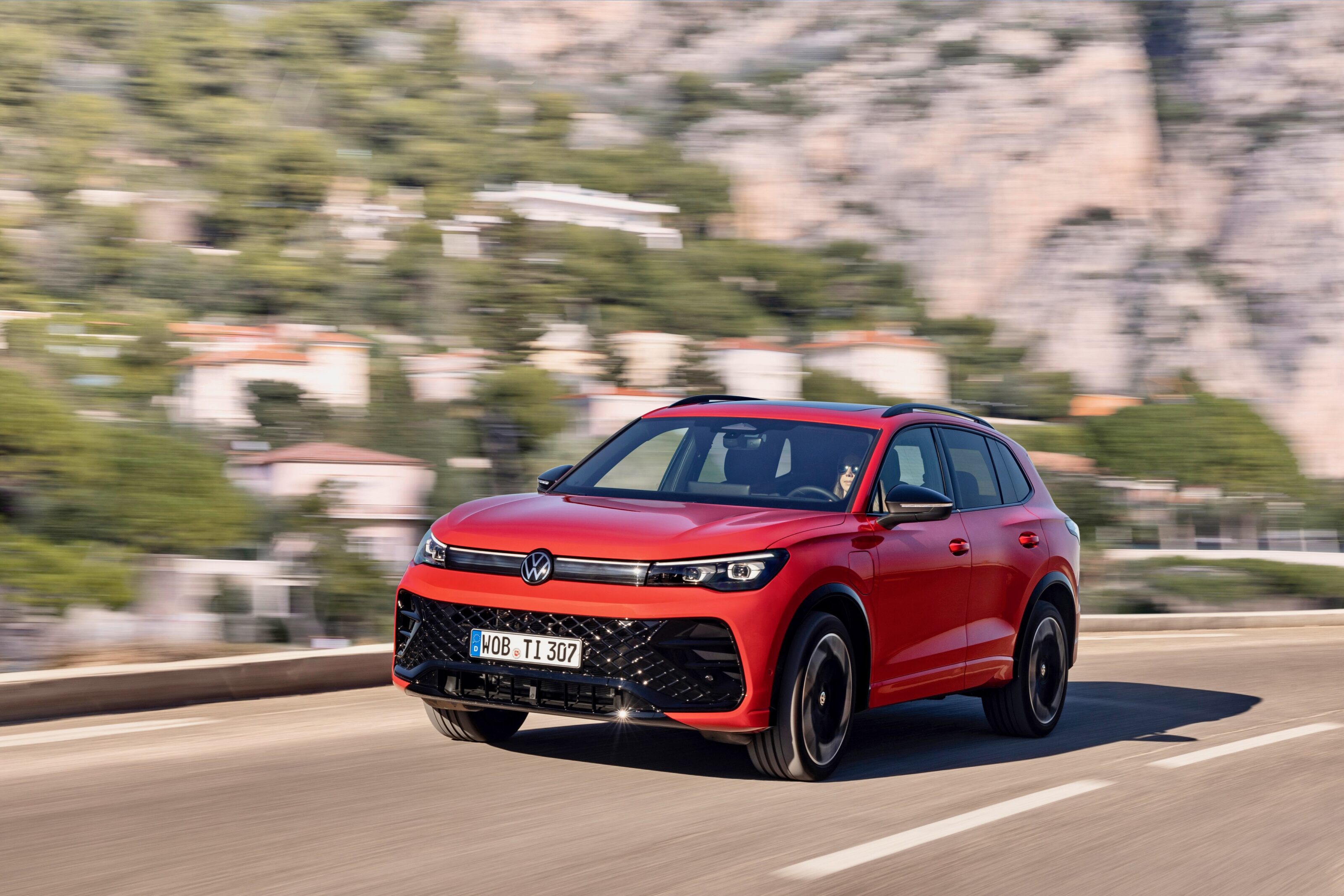
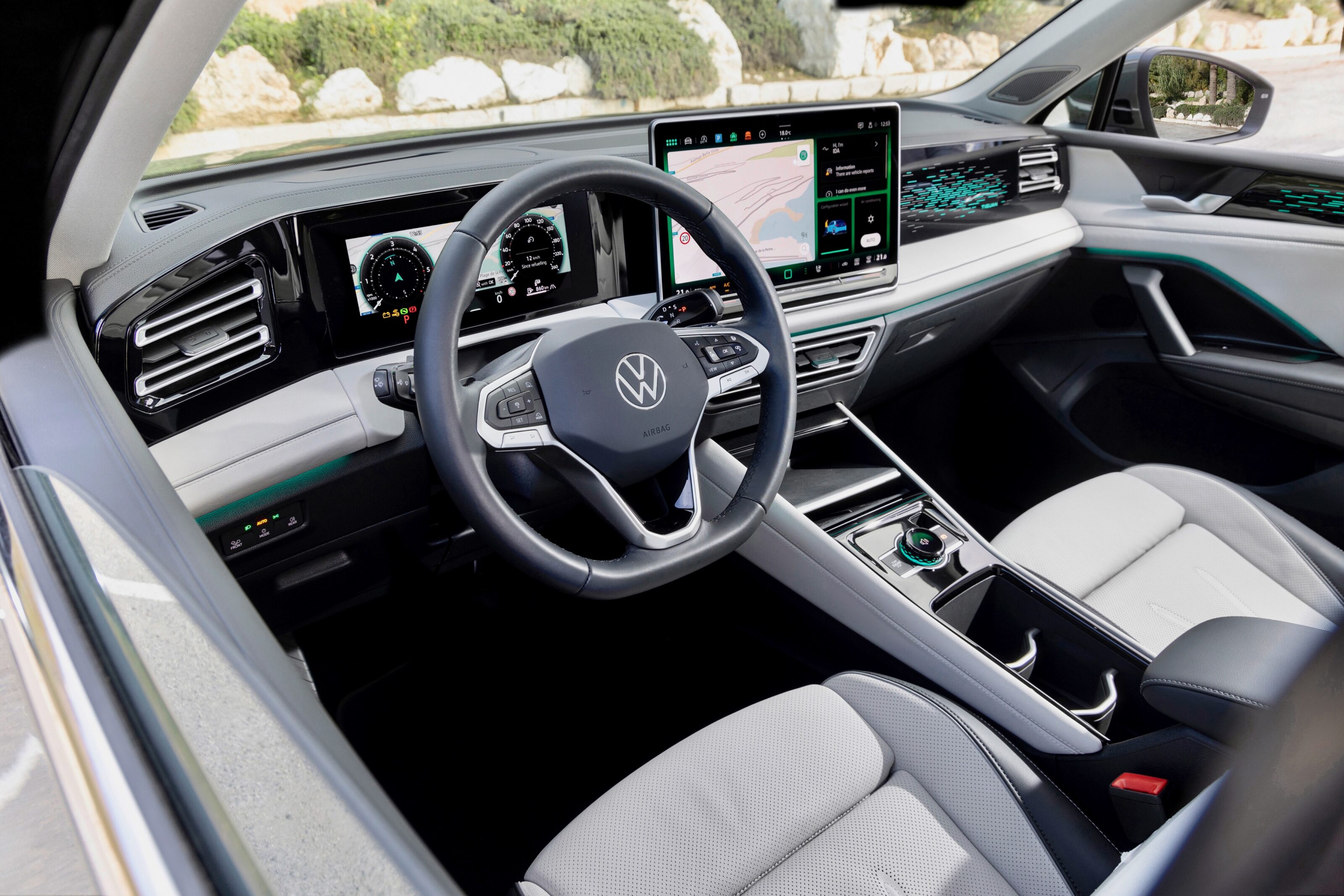
Volkswagen has also added new models in the middle of the range and despite the price increase, the base 110TSI Life is now much better equipped with 19-inch alloy wheels, a larger 12.9-inch infotainment touchscreen, an electric tailgate, a 360-degree camera, built-in satellite navigation, a wireless phone charger, wireless Apple CarPlay and Android Auto, and DAB+ digital radio.
As before, three turbocharged petrol drivetrains will be available in the new Tiguan: a 110kW/250Nm 1.4-litre, 150kW/320Nm 2.0-litre and uprated 195kW/400Nm 2.0-litre. All three are mated to a seven-speed dual-clutch transmission and while the 110TSI is front-wheel drive, the 150TSI and 195TSI are all-wheel drive.
While the 110TSI engine is the same as the last Tiguan – but now with an extra gear at seven in total – the former 132TSI has become the 150TSI, and the 162TSI is now the 195TSI.
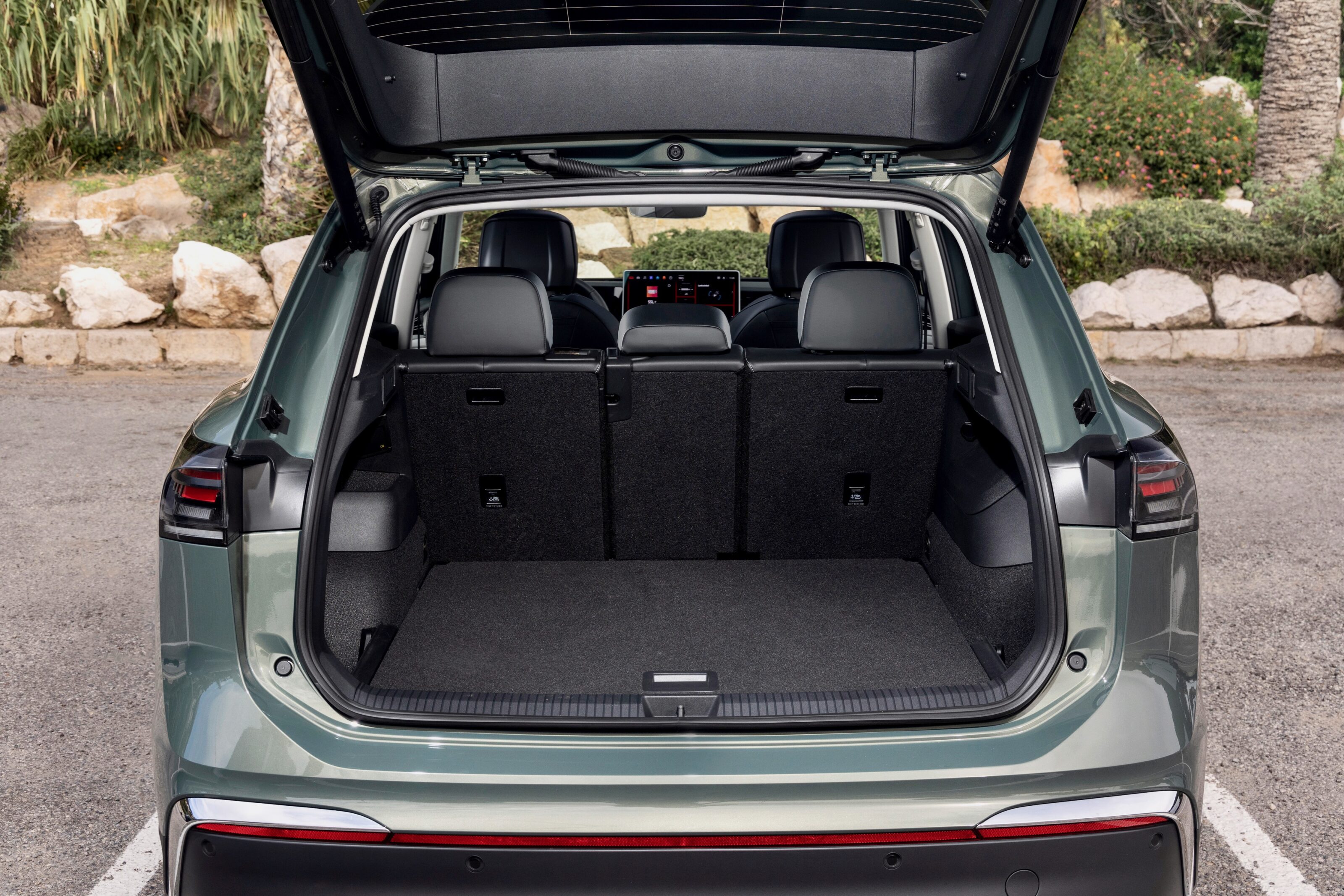
One of the surprise reveals of the recent Melbourne Motor Show was the new MG U9 ute, which has been confirmed for Australian release in the fourth quarter of this year. Now a few weeks later, MG has announced that it’s started an extensive Australian testing program to tune the U9 for our conditions.
MG Motor Australia is conducting thousands of kilometres of real-world testing to ensure the MG U9 meets the unique demands of Australian roads. The local tuning program is being led by MG’s in-house engineering team to deliver a ute that’s tough, capable, and tailored for Australian needs, according to the company.
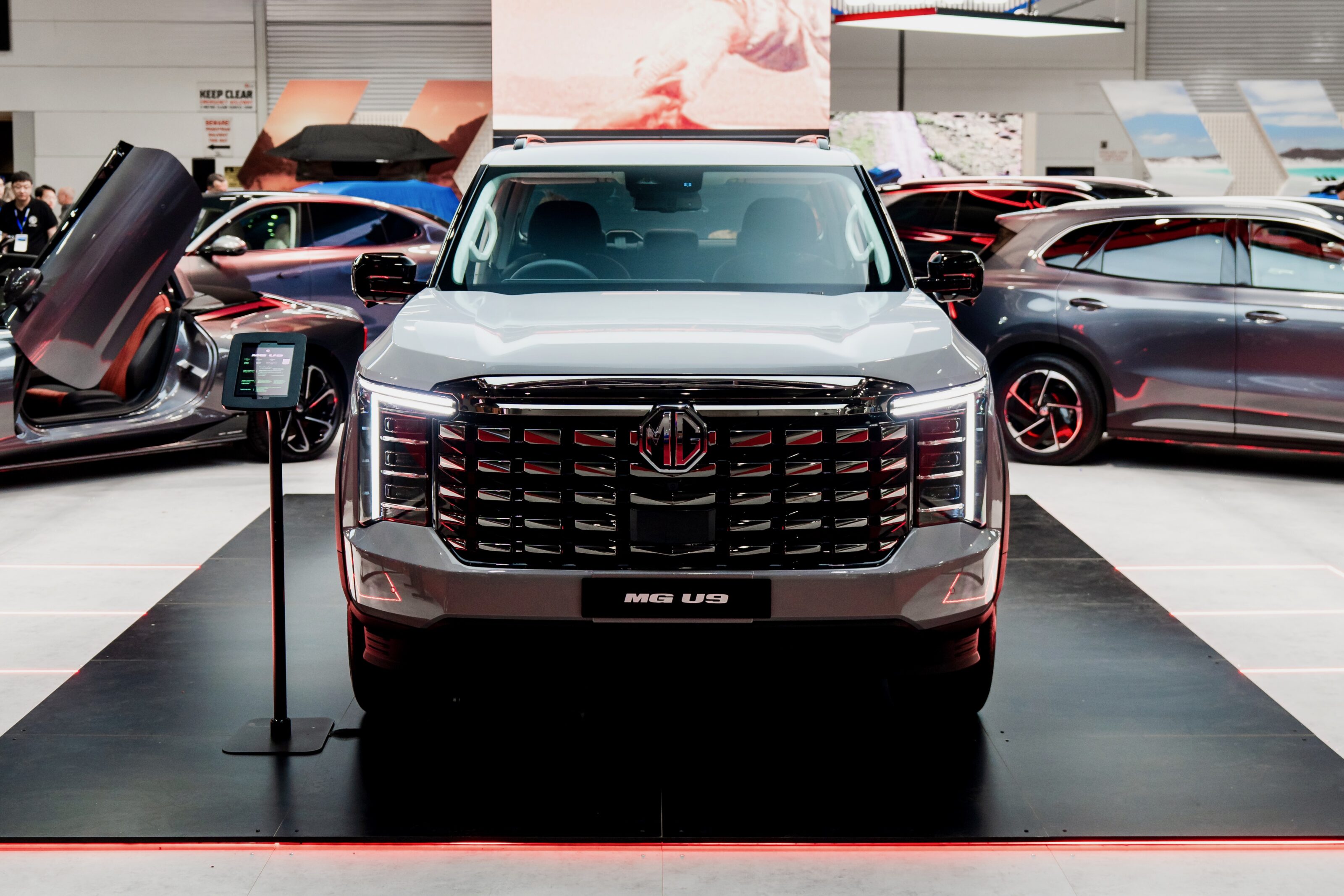
Under the bonnet of the MG U9 will be a 2.5-litre turbo-diesel engine making 160kW of power and
520Nm of torque and mated to a four-wheel drive system as standard. While specific details like
fuel consumption are yet to be confirmed, the brand has announced that it will be able to tow the
benchmark 3.5 tonnes, much like other utes such as the Ford Ranger, Toyota HiLux and Isuzu D-Max.
To also be sold in Australia as the LDV Terron 9, the U9 will feature wireless Apple CarPlay and
Android Auto as standard, as well as the innovative tailgate step that reportedly pleased attendees
of the Melbourne Motor Show.
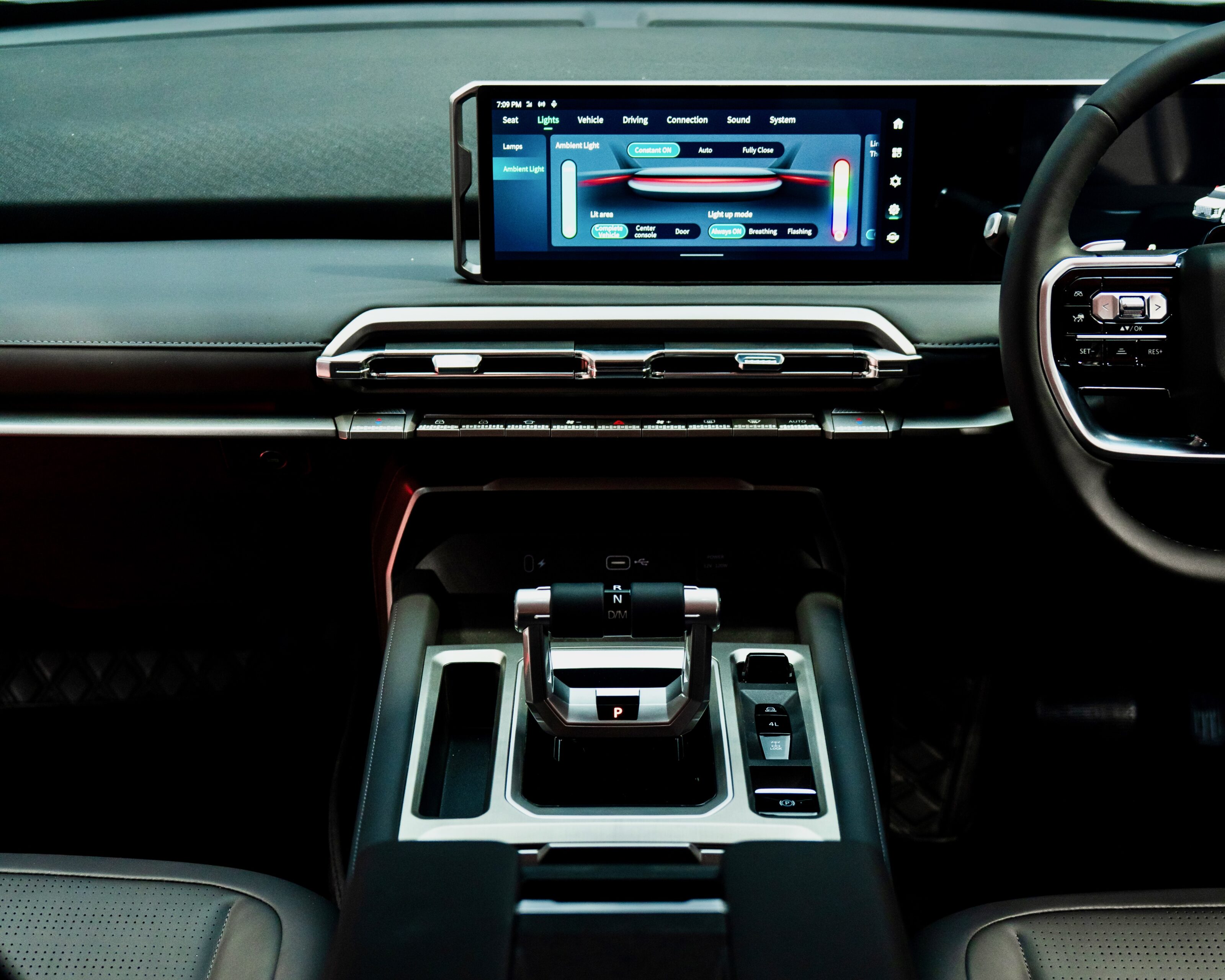
The U9 will also include the ‘MG Pilot’ suite of active safety features, including a 360-degree
camera, as well as its ‘iSmart’ app so that owners can access remote features like
locking and unlocking from their smartphone.
“The reaction to the MG U9 at its global reveal at the Melbourne Motor Show was fantastic,” said MG Motor Australia’s Chief Executive Officer, Peter Ciao. “We are proud to have unveiled MG
Motor Australia’s first-ever ute — a vehicle designed, engineered, and refined by MG.
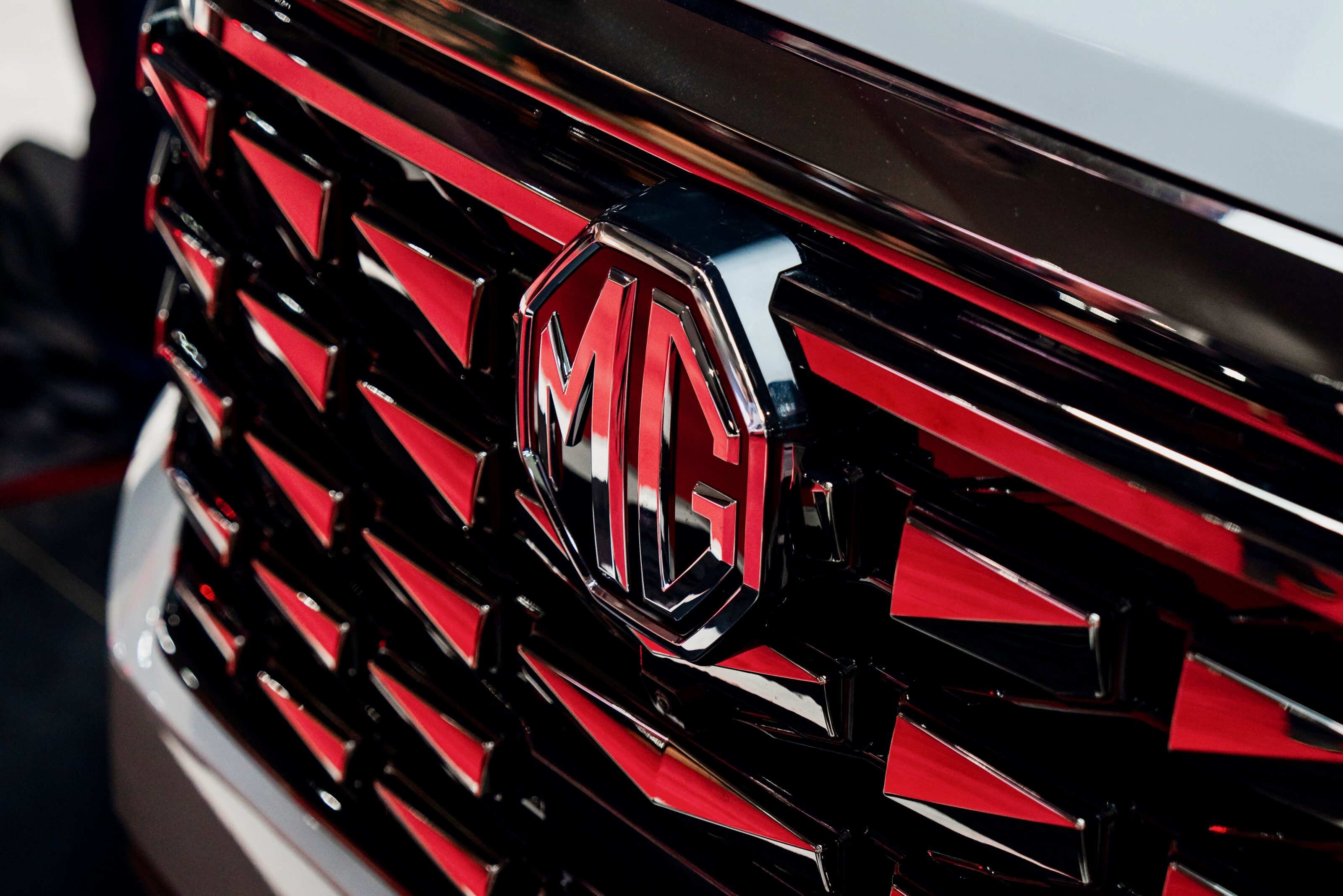
“Our local team is committed to fine-tuning the MG U9 over the coming months to meet the
needs of Australian drivers. This is MG’s ute — tough, capable, and designed for the diverse
conditions and demands of this country. Most importantly, it will offer incredible value for Australian
families and tradespeople alike.
The MG U9 ute will go on sale locally in the fourth quarter of 2025 with local pricing and specifications yet to be announced.
A recent survey has highlighted a troubling trend on Australian roads, with one in six drivers confessing to engaging in at least one dangerous driving behavior.
The study, by insurance comparison site iSelect, sheds light on the prevalence of risky driving habits across the nation.
Topping the list of dangerous driving habits is speeding, with a staggering 41.2 per cent of drivers admitting to this offence. This is closely followed by driving while extremely tired or drowsy, with nearly one in five drivers (19.4 per cent) acknowledging this risky behavior.
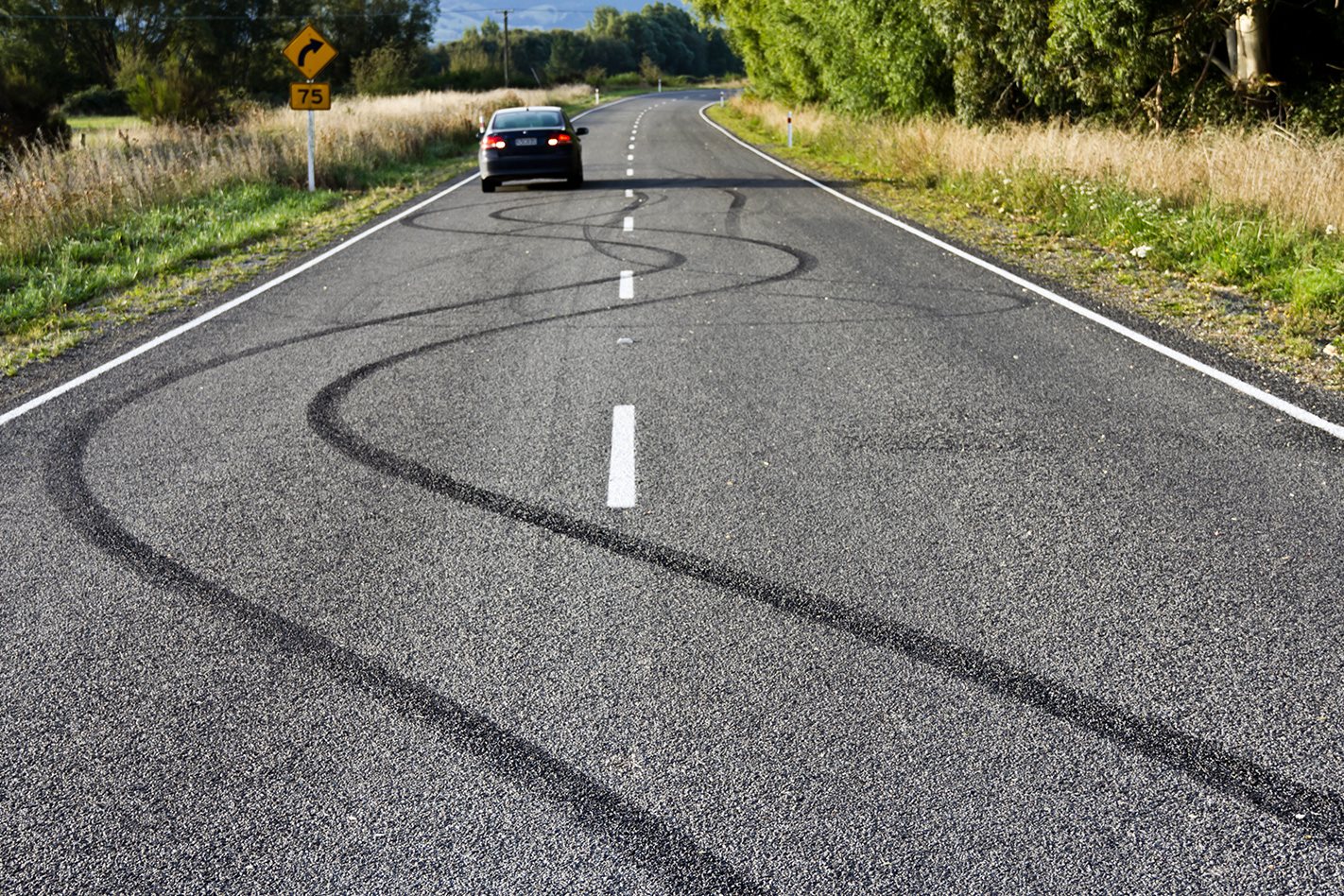
The use of mobile phones while driving is also a significant issue, with 15.4 per cent of drivers admitting to taking calls without a hands-free setup and 13.7 per cent confessing to messaging or emailing. Another 7.7 per cent of respondents have used social media and 7.1 per cent have taken photos or videos of things outside the vehicle, all while driving.
These distractions are among the top eight dangerous behaviors reported, emphasizing the importance of the current focus on fatigue and phone use in recent road safety campaigns. As police forces intensify their efforts to combat these issues, it is clear that these actions are not merely reactive but are informed by the self-reported habits of the driving population.
When analysed by gender, the survey revealed that the difference between men and women in terms of risky driving is minimal, with 61.5 per cent of women and 60.1 per cent of men admitting to some form of dangerous behavior.
Speeding was the most commonly admitted offense for both sexes, although women were more likely to be distracted by passengers, with 17% saying they had been distracted by them, compared to just 9% of men. This discrepancy may be linked to the greater number of women who are primarily responsible for driving children.
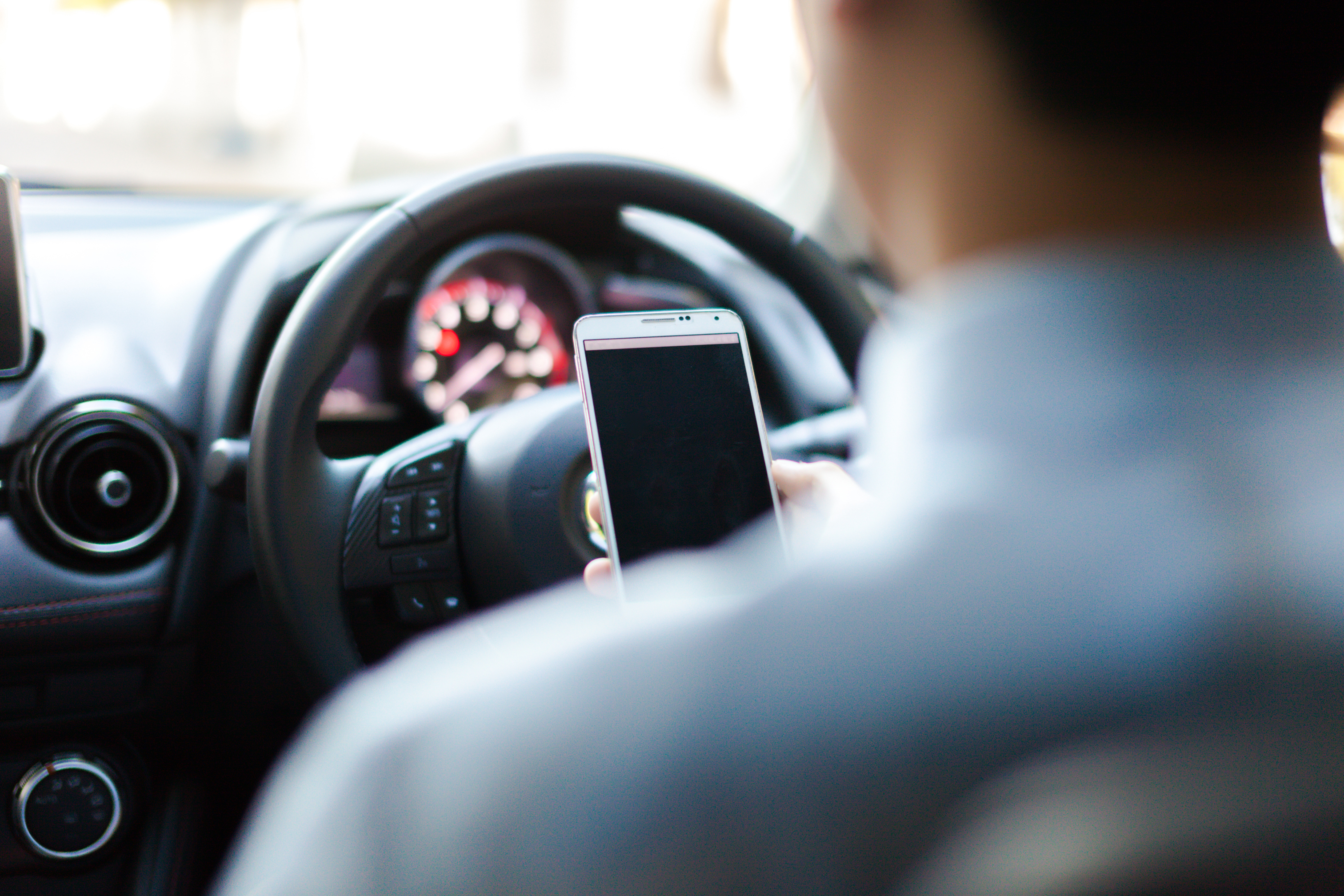
Generational differences also emerged, with Gen Z (18-24 year olds) the most likely to engage in dangerous activities (73.2 per cent), followed by 25-34 year olds (70.9 per cent). In contrast, only 48.9 per cent of drivers aged 65 and over admitted to such behaviors.
Speeding remained the most common offense across all age groups, with the highest rate reported among 55-64 year olds (42.3 per cent). Notably, younger drivers were significantly more prone to driving while distracted by technology, such as scrolling through social media, taking selfies, or watching videos, compared to their older counterparts.
The study also found that the Australian Capital Territory had the highest proportion of drivers admitting to risky behavior (69.1 per cent), followed by Queensland (65.3 per cent) and Victoria (62.3 per cent). In contrast, Tasmania reported the lowest rate at 53.7 per cent.
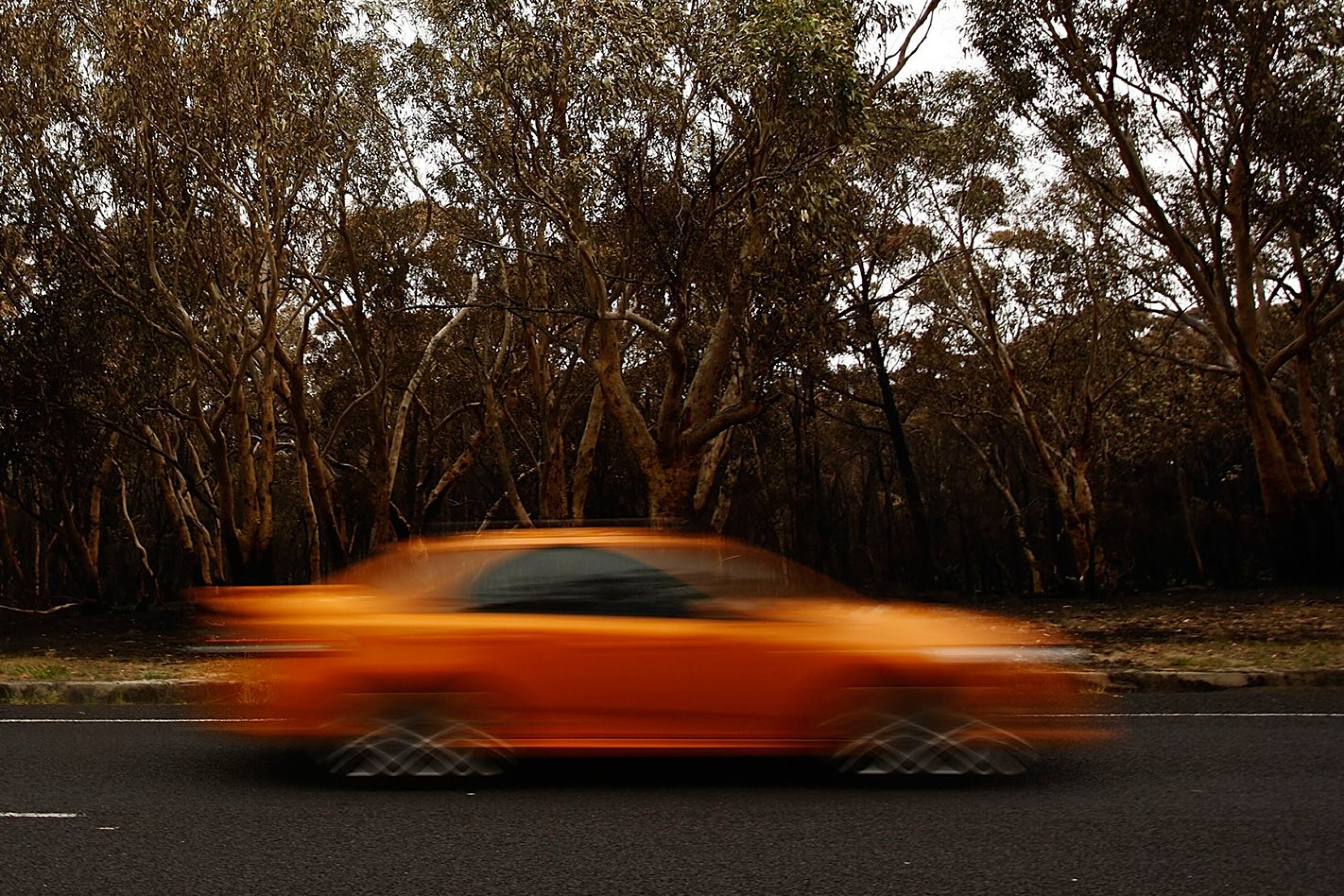
The survey even drilled down into which make of car the most dangerous drivers owned, with Audi drivers topping the list for risky driving, 82.5 per cent admitting to at least one dangerous habit. Volkswagen followed at 70 per cent, while MG (50.9 per cent) and Honda (53.9 per cent) drivers were the least likely to take risks behind the wheel.
The survey serves as a wake-up call to all drivers to reflect on their habits and consider the potential consequences of their actions. As technology advances and our lives become increasingly intertwined with our vehicles, it is crucial that all drivers are aware of the risks and take the necessary steps to mitigate them.
If you’ve ever been lucky to drive a supercar, you’ll know that when you slide behind the wheel the world seems to smile upon you. Birds sing in the trees, your ears tingle with pops and crackles from a raspy sports exhaust, and fellow drivers tend to (but not always) greet you warmly with metaphorical hugs and literal thumbs up.
But here’s the thing: in news sure to please those of us who worry about real-life problems like the price of petrol and olive oil, I’ve discovered you don’t need to sell a kidney or max out the mortgage to buy a supercar if you want to receive such positive vibes. No, you can get largely the same experience in the new Hyundai Santa Fe.
Slip inside the strikingly boxy proportions of the fifth-generation Santa Fe (anyone else getting major Land Rover Defender vibes from the exterior design?) and you can feel the eyes of pedestrians follow you as you cruise by. One elderly gentleman even stopped in the middle of a pedestrian crossing to stare quizzically at its lantern-jawed front end, while a fellow driver (she was in a banged-up second-gen Santa Fe) actually rolled down her window at a set of lights and shouted “Wow!” before giving me a double thumbs up.
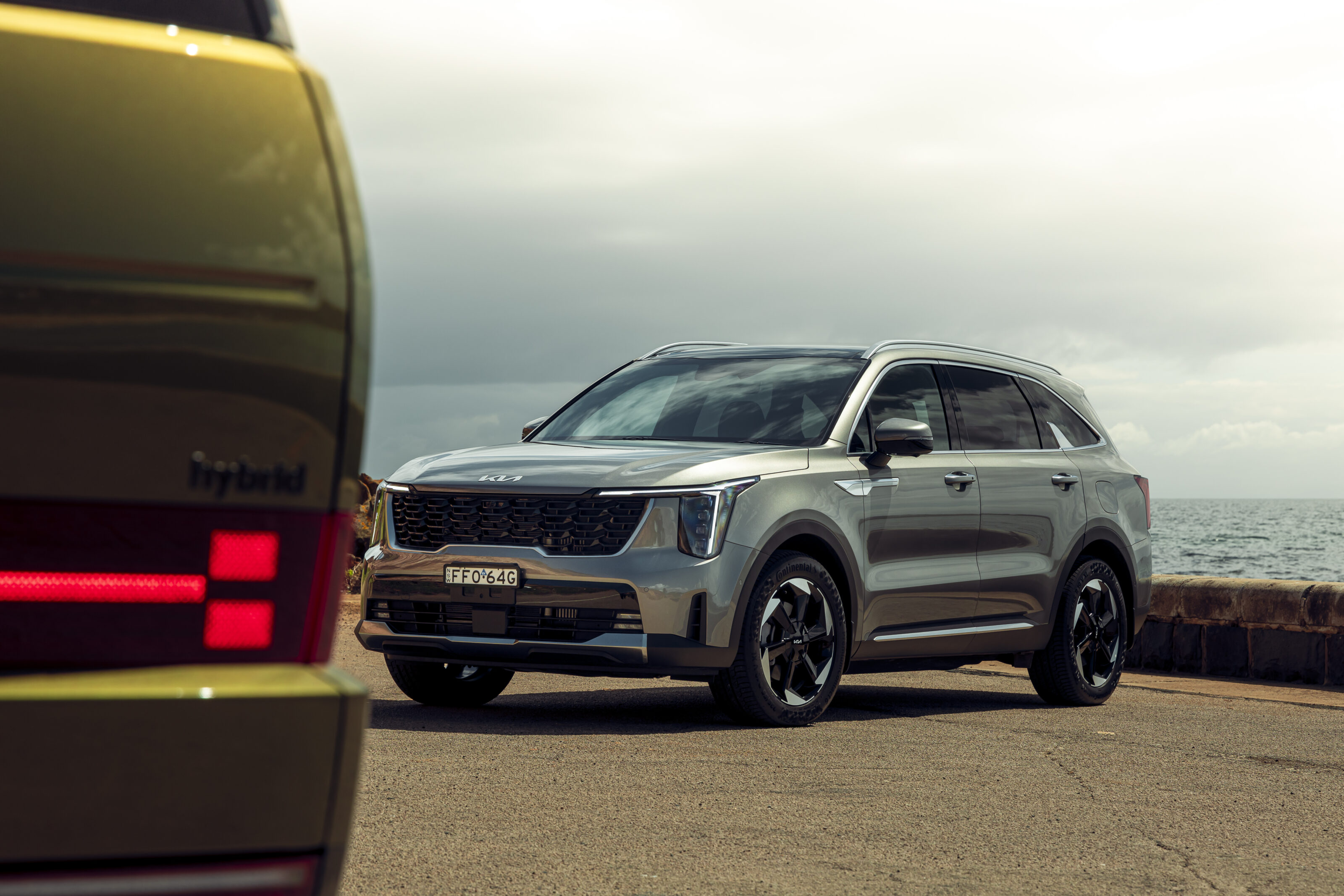

Okay sure, not everyone loves the bold new look (the rear is especially polarising) but there’s no denying this new Santa Fe is a statement piece. The kind of SUV you park proudly on the driveway for your neighbours to see, rather than slinking it into the garage at night. Is there another mainstream seven-seat family SUV that offers such visual clout? Well yes, actually. Enter the Kia Sorento.
A direct sibling to the Hyundai – this pair share their underpinnings, powertrain, interior tech and basic dimensions – the Sorento scored a recent facelift that brought a host of improvements to its chassis and interior.
It also included an exterior redesign and while its handsome proportions remain unchanged, the 2024 Sorento now has a fresh new face and an angular, almost Volvo-like LED lighting signature.
So they’re both adventurous, striking and, dare we say it, desirable, but which of these family haulers is best? To answer that question, we’ve opted to test hybrid versions of each contender, which has pushed the price point of this test into the $70K bracket. You can buy a hybrid-powered Santa Fe for $55,550 before on-road costs, but for now, Kia has reserved its fuel-saving powertrain for the flagship GT-Line model grade, which retails for $73,990 in all-wheel-drive guise. To ensure a level playing field, we’ve nabbed a top-spec Santa Fe Calligraphy AWD which costs $1010 more than the Kia at $75,000.
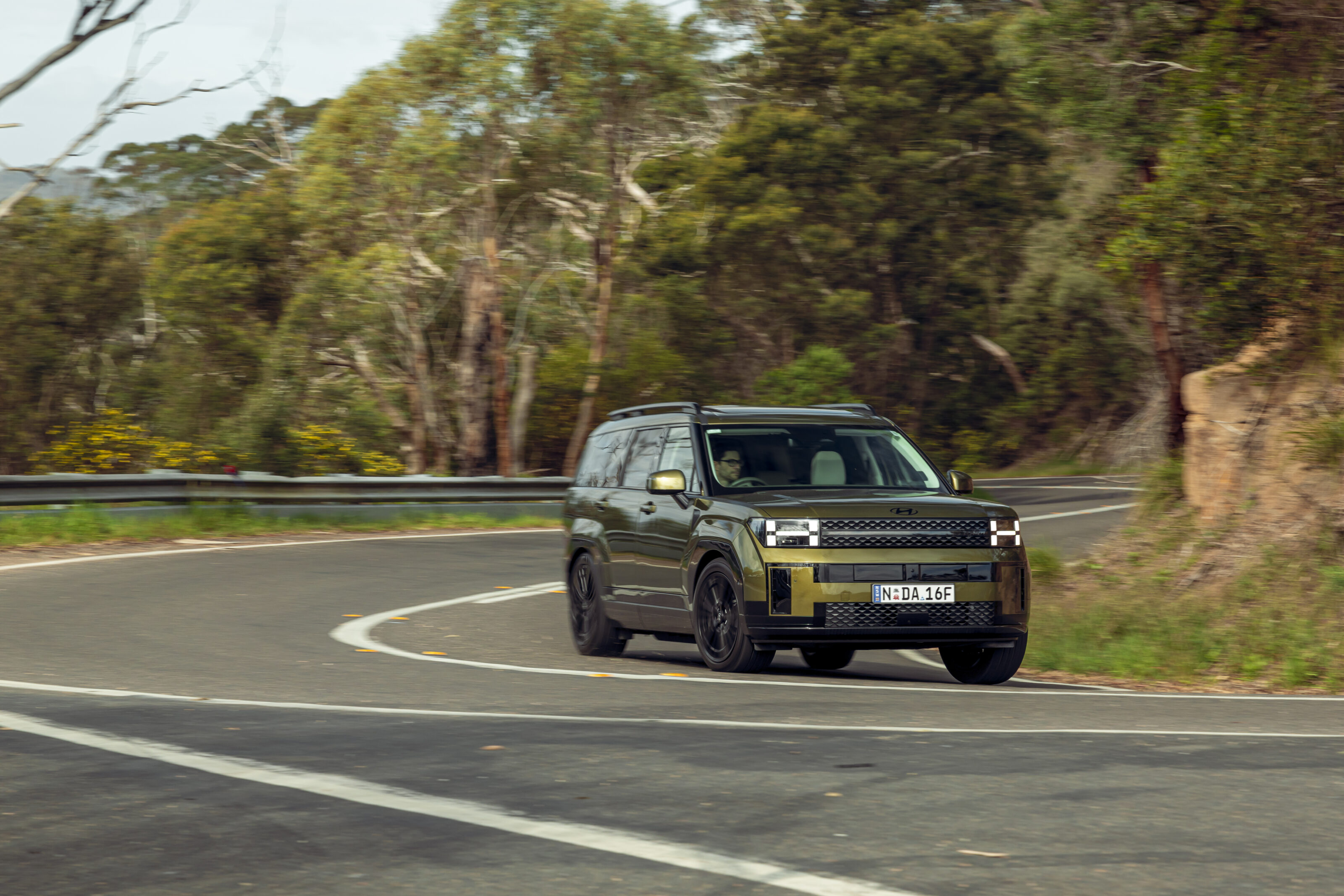

Being directly related means this pair share a lot of their core DNA. The hybrid engines, for example, are identical and combine a punchy 1.6-litre four-cylinder turbo-petrol with a 44kW electric motor fed by a small 1.49kWh battery pack. The appeal in going hybrid is obvious. With combined outputs of around 170kW and 350Nm (the on paper figures vary slightly, with the Hyundai’s 172kW/367Nm just trumping the Kia’s 169kW/350Nm), the promise is these SUVs will provide the best of both worlds – the response and refinement of a petrol engine with the economy and range of a diesel. With a full tank of 91-octane regular unleaded, both of these family SUVs will get close to 900km on a leisurely run.
Dimensionally, there’s only a cigarette paper between them, too. The Hyundai is 15mm longer and a sniff taller thanks to the Calligraphy’s roof racks but their key hardpoints, and 2815mm wheelbases, are identical. Even their stock kerb weights are lineball at around 2000kg.
But for all their similarities, it’s the Hyundai that makes the strongest first impression when you jump inside the cabin. It feels amazingly premium in here. Our car has a cream and green two-tone interior and the layout is so modern and spacious that it feels like a luxury product, not a humble mainstream family SUV.
Again, there’s a strong influence from Land Rover in the design – even the steering wheel is eerily reminiscent of a Range Rover’s four-spoke wheel – and there isn’t a single Hyundai badge in sight. Instead, you score a sleek horizontal badge with four dots, which is Morse code for the letter H.
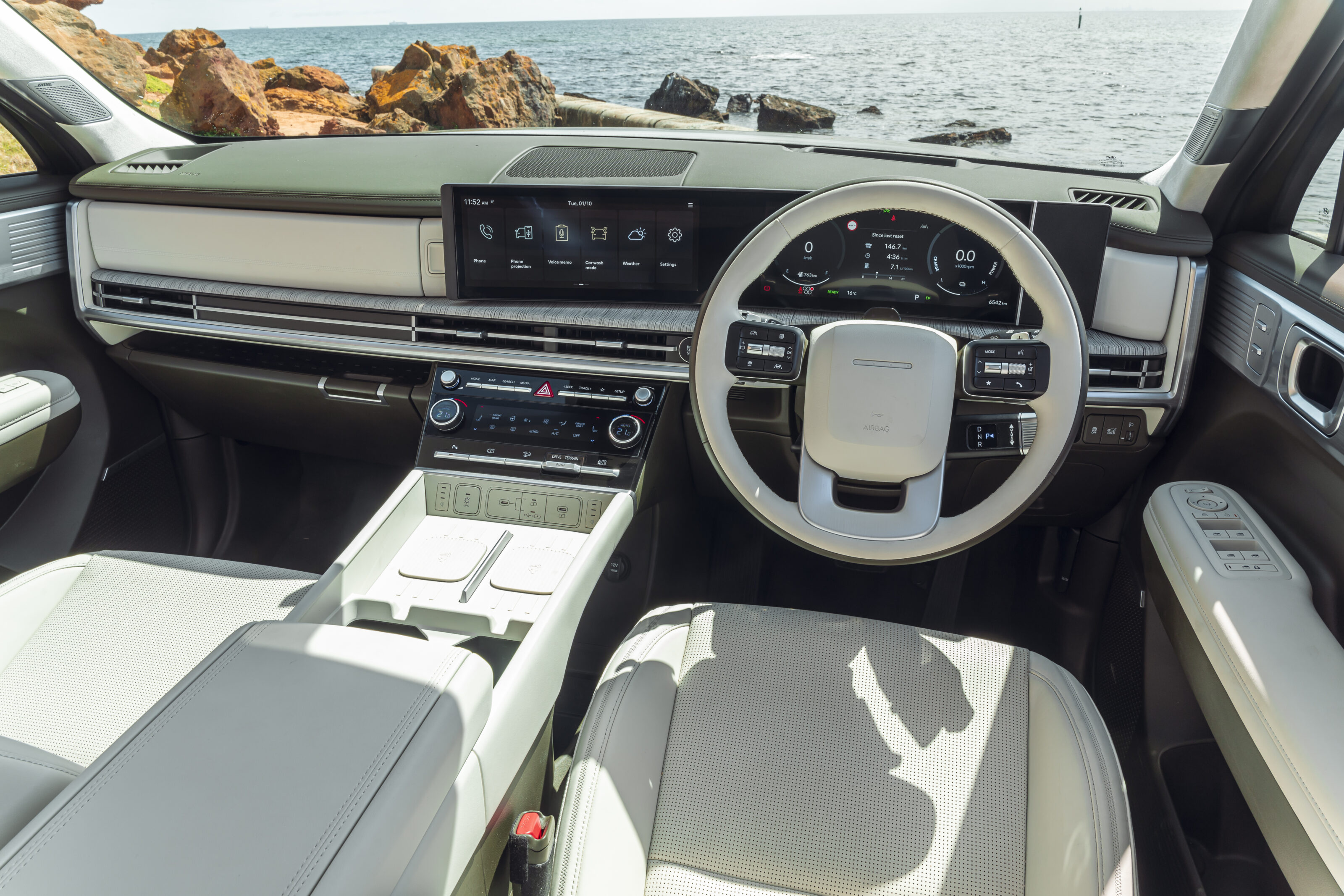

After the initial sense of plushness, you realise it’s a cabin that majors on two things: technology and storage. Two wireless charging pads adorn the top of the centre console, the centre screen is enormous, and a large head-up display and wireless Apple CarPlay/Android Auto are standard. The digital dashboard is the same twin-screen unit you get in the Sorento and it’s excellent in both cars with clear graphics, fast response times and a dense but logical menu structure.
Front storage is superior in the Hyundai, though. Unlike the Kia, which has a chunkier centre console, the Santa Fe has an extra storage cubby between the knees of the front passengers. The lidded centre bin at your elbow is also cavernous (it’s twin-hinged so it can be accessed by those in the front and the back) and there are two glove boxes, including one with a UV-C function that can sterilise items like your phone and keys.
There’s a useful shelf for small items between the two gloveboxes, too, which you don’t get in the Kia, and while the door pockets are on the skinny side, they’ll swallow a basic 600ml water bottle. Speaking of cupholders, there are 16 inside the Santa Fe which, apart from seeming like overkill, is four more than you get in the Sorento.
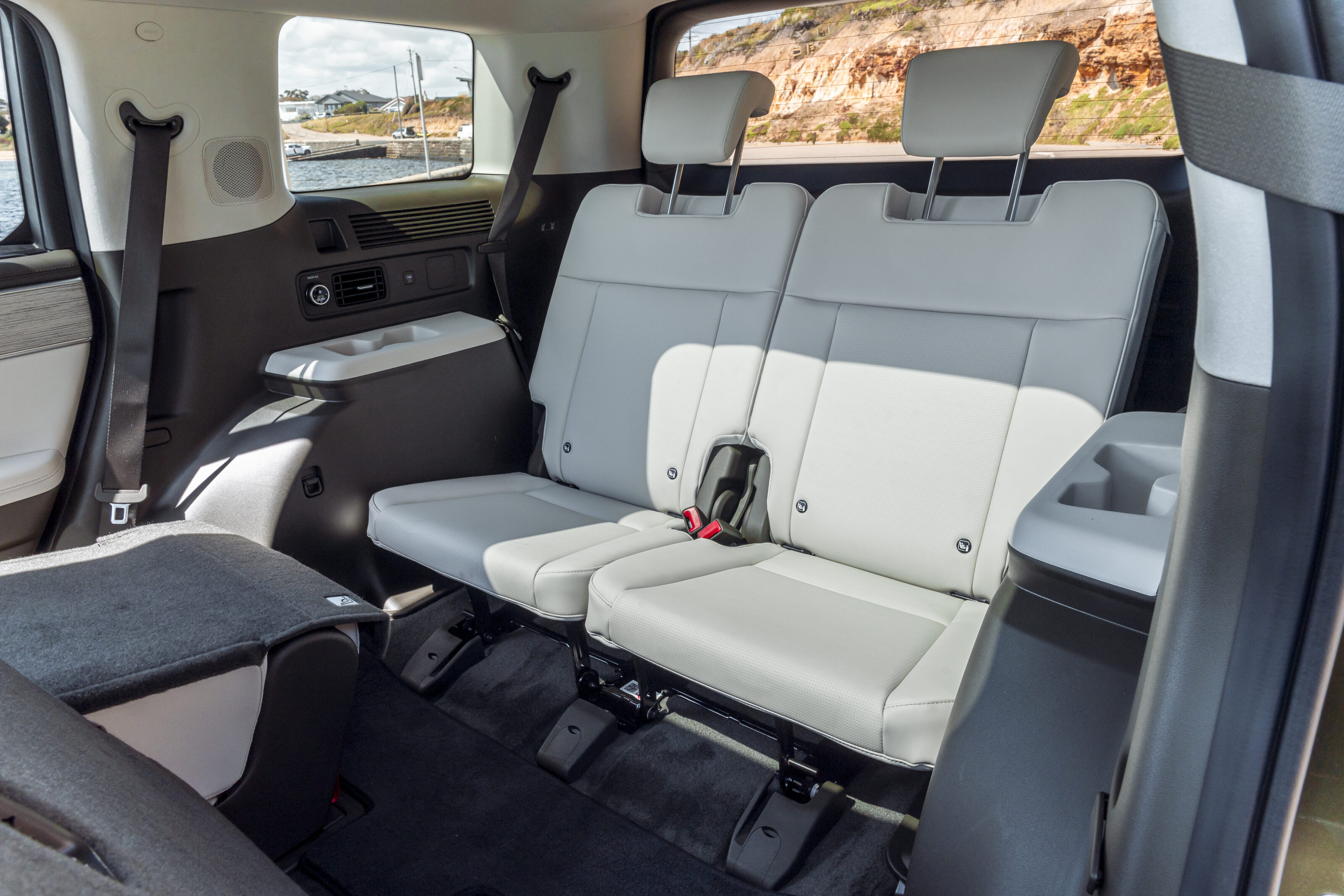
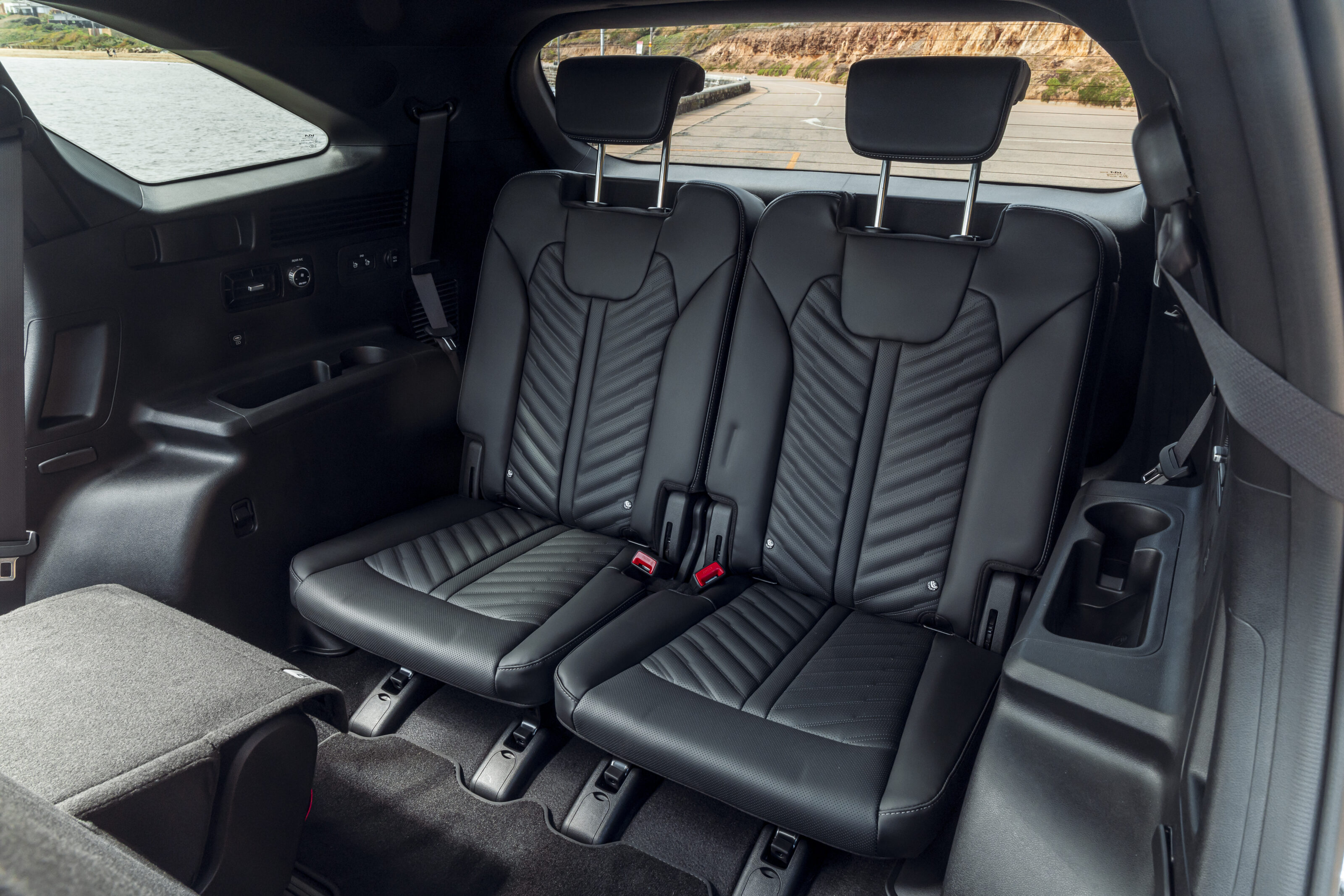
Seat comfort is superb and Hyundai has also struck a nice balance between physical and digital controls. There are knobs to adjust the temperature and volume but one minor complaint is the black touch panel that controls functions like the fan speed and heated/cooled seats soon looks ugly with fingerprints. Some of the cabin materials also feel a touch thin and plasticky but, ultimately, the Santa Fe’s cabin does a fabulous job of making you feel like you’re in a Range Rover. For half the price.
In contrast, the Sorento’s interior is instantly a much darker and more sombre place to sit. There’s still plenty of personality in the cabin design, though, and the recent facelift has done wonders in making the Sorento feel modern and contemporary. Where the old Sorento’s small centre screen, USB-A outlets and wired Apple CarPlay connection were beginning to betray its age, the tech offering in the 2024 model is bang up to date. Given their shared hardware and software, there’s little to separate the Kia and Hyundai for tech and connectivity, although the Sorento makes do with one wireless charging pad compared to the Santa Fe’s two.
Cabin space and storage also aren’t quite as generous in the Kia. And it can’t compete for sheer X-factor. The steering wheel design is more basic and while the Hyundai’s interior trim can feel insubstantial in places, it’s easier to find hard, shiny plastics in the Kia. There’s a greater use of piano black trim in the Sorento, too.
It’s a similar story in the second row. Climb into the Hyundai’s back seat and it’s the sense of space that strikes you first. The cushion has a high base, which is great for kids to get a better view out, and it’s amazingly feature rich back here. There are dual cupholders on the door cards, which will double as useful storage cubbies for your kids’ snacks and toys, and you score retractable window blinds, twin USB-C outlets, multiple coat hooks, and three-stage heated seats.
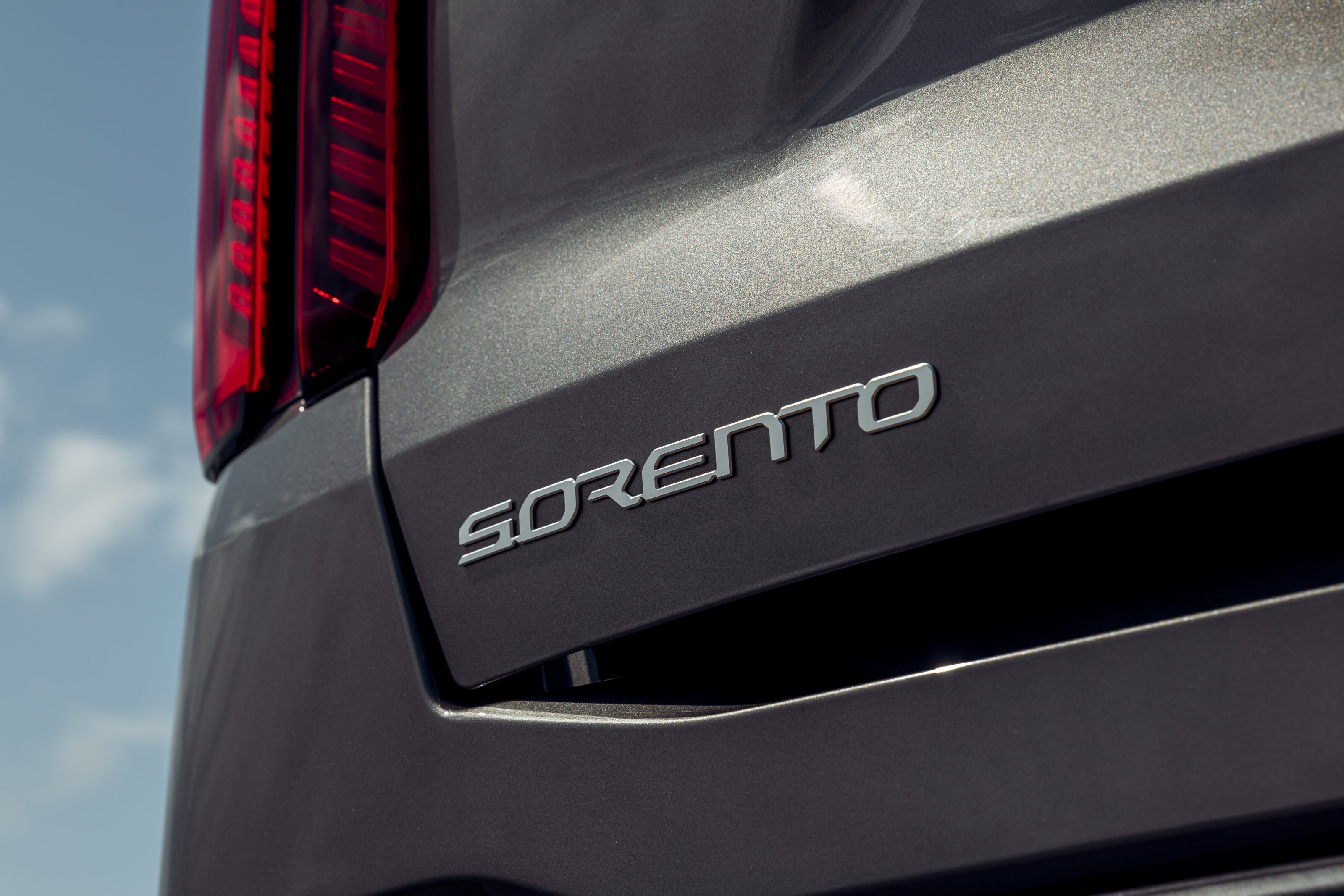
Six-foot adults will find they have ample knee, shoulder and head room, and there’s plenty of flexibility thanks to a sliding bench seat and an almost flat floor with no intrusive transmission tunnel. Ventilation is also excellent courtesy of face-level air vents in the B-pillars.
Things aren’t quite as good in the Sorento’s middle seat. While you get the same sliding bench and most of the same creature comforts (the air vents are in the back of the centre console rather than the B-pillar), you miss out on the coat hooks, there are only two stages for the heated seats compared with three, and there’s only one cupholder in the top section of the door card rather than two.
Third-row access is also superior in the Hyundai. Its boxier design and upright C-pillar mean the gap you have to clamber through is larger, and while both SUVs can carry adults in the rearmost pair of seats, the Hyundai has more headroom and offers features such as an adjustable backrest angle.
The Hyundai extends its growing advantage when it comes to boot space. While there’s little to separate them for sheer volume and amenity (the Hyundai has 628 litres of cargo capacity behind the second row compared to 608 in the Kia), the Santa Fe has a noticeably lower loading lip.
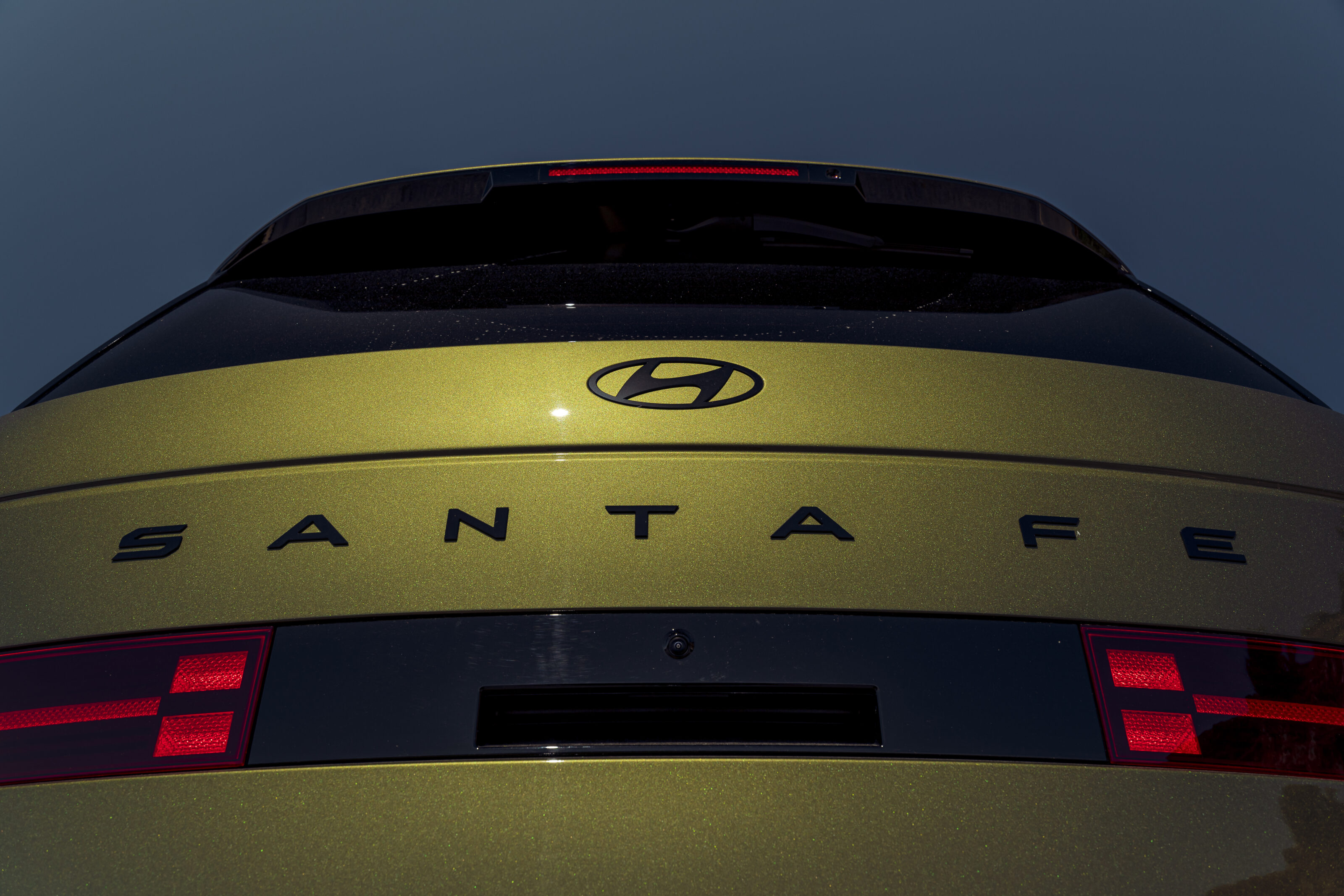
If it feels as though we’re splitting hairs to separate this pair, you’re bang on – their core attributes are remarkably similar – but one area where they’re distinctly different is how they drive.
The Kia is more car-like. Its thinner-rimmed steering gives you a firmer initial handshake and the ride on 19-inch alloys, which has been fine-tuned for Aussie conditions, is more locked down. Kia’s local chassis team has fitted the updated Sorento with specially developed dampers and the result is a large SUV that offers greater control, improved NVH, and a level of dynamic engagement that makes it genuinely fun on a winding road. The trade off is passengers can be jostled around a little more on broken back roads, but in most scenarios the Sorento strikes a commendable balance between ride comfort and control.
The Hyundai is softer and waftier. Its steering is lighter and less connected, and the wheel itself is also thicker, which contributes to a sense of distance between you and the road surface. Body roll is more noticeable, too, and on twisty roads the Hyundai doesn’t have the damping control of the Sorento, so it’s not as engaging. It’s still impressively capable for a near two-tonne seven-seater, though. Push through the steering’s vagueness and the Santa Fe displays a level of dynamic competence that’s surprising for such a big vehicle.
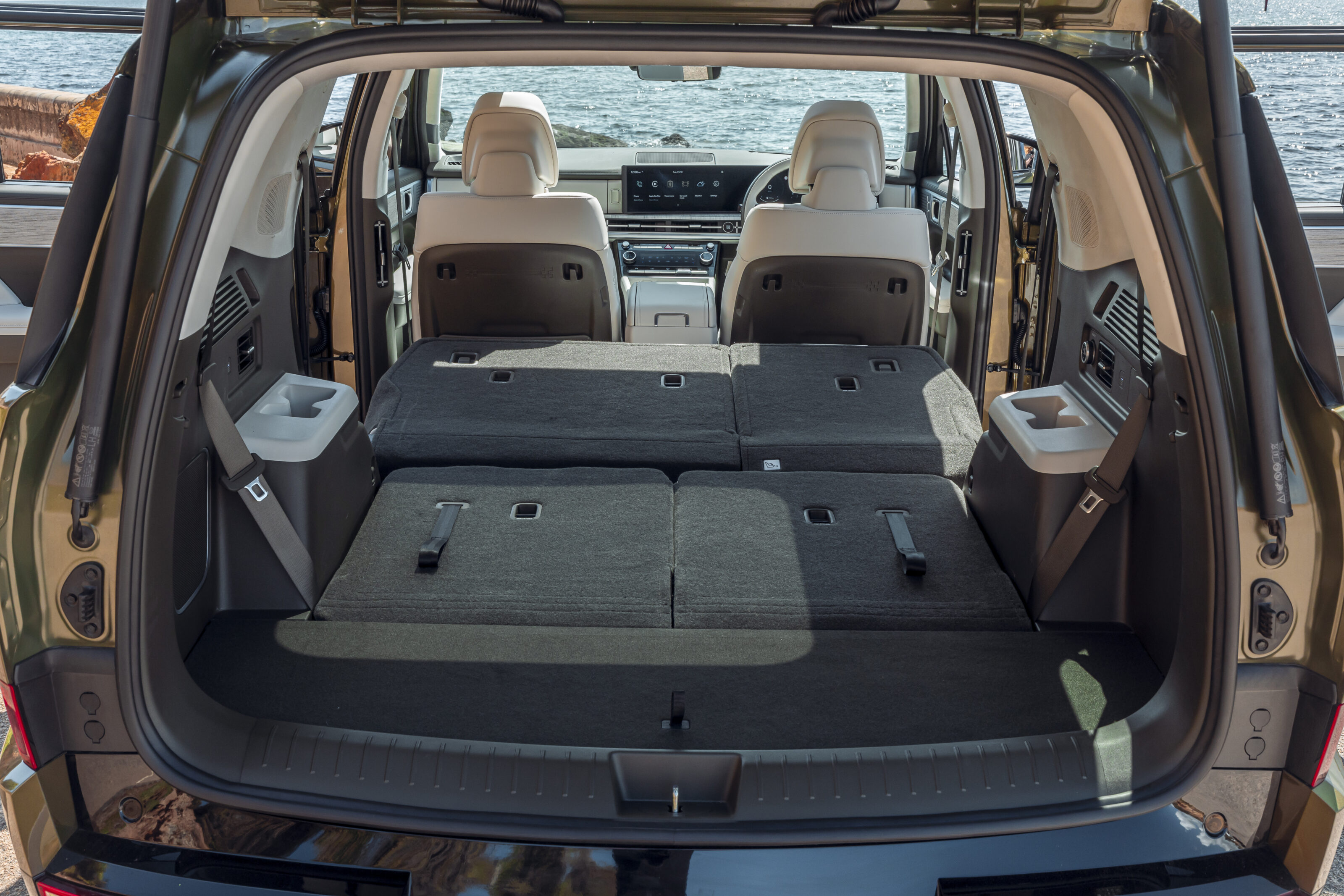
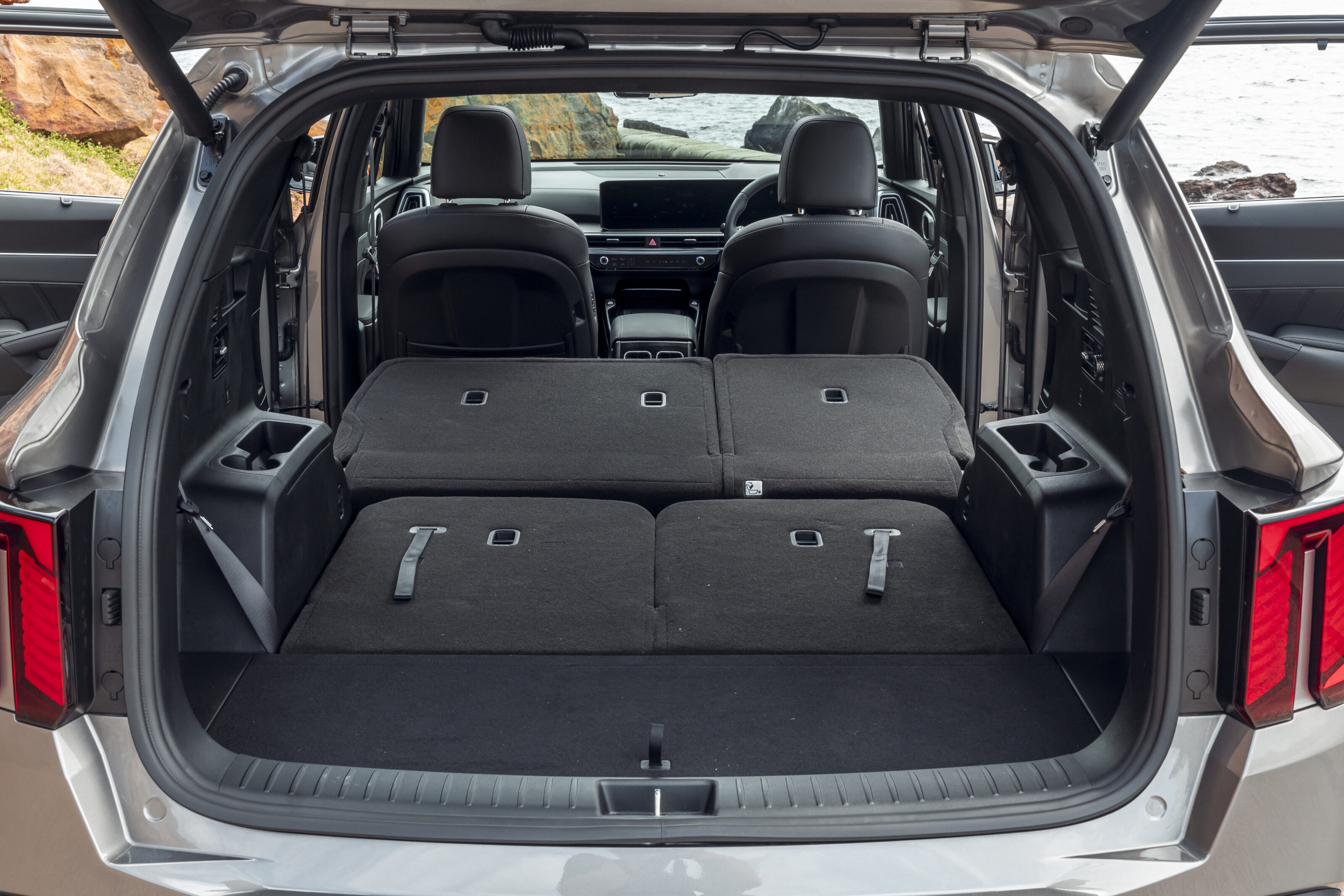
You might fear that 1.6-litres isn’t enough to propel a vehicle of this size but the performance, response and refinement of the powertrain is commendable in both SUVs. There’s ample grunt for easy overtakes and you also score three levels of regen’ braking which you adjust via the steering-wheel paddles. The engine is better isolated in the Hyundai, however. On a constant throttle at around 3500rpm, the Sorento’s turbo-petrol can be a touch vocal. As for fuel economy, there’s nothing to split them with the Santa Fe returning 7.1L/100km over our test loop compared with 7.2L/100km in the Sorento.
Still, against the scorecard it’s a clear win for the Hyundai. As an all-new generation vehicle it’s half a step ahead of the Sorento in its life-cycle and it feels it. But the margins between this pair are so small that it’s easy to recommend both. A Toyota Kluger hybrid feels noticeably less polished by comparison, so really the decision will come down to which of this duo you like the look of more. Either way, you can’t lose.
Hyundai Santa Fe
IF YOU desire colour and flair in your interiors then you’re going to adore the Santa Fe Calligraphy in two-tone Forest Green or Pecan Brown. It’s Range Rover-rivalling for a fraction of the price. Both front seats get ‘relaxation’ recline function with electric ottomans. There’s also dual wireless charging pads (plus wireless smartphone mirroring) and double-deck centre console storage, though door bins are comparatively stingy. Vision, refinement, ride comfort and seat support all excellent, with superior third-row access to Sorento thanks to upright C-pillars. Some lower plastics betray Hyundai’s cost-consciousness, yet they’re hardly worth criticising – this interior sets a new benchmark for large mainstream SUVs.
| Price | $75,000 |
|---|---|
| Engine | 4cyl, dohc, 16v, direct injection, turbo |
| Electric motor | 4/5 |
| Battery | 1.49kWh lithium-ion polymer |
| Layout | Front-engine, all-wheel drive |
| Capacity | 1598cc |
| Power | 172kW @ 5600rpm |
| Torque | 367Nm @ 1000-4100rpm |
| Transmission | 6-speed automatic |
| L/W/H/WB | 4830/1900/1770/2815mm |
| Track (F/R) | 1637/1647mm |
| Weight | 1990kg |
| Boot | 628 litres |
| Fuel tank | 91 RON/67 litres |
| Economy | 5.6L/100km (combined), 7.1L/100km (tested) |
| Suspension | Front: struts, A-arms, anti-roll bar Rear: multi-links, coil springs, anti-roll bar |
| Steering | Electric power-assisted |
| Front brakes | Ventilated disc (325mm) |
| Rear brakes | Ventilated disc (325mm) |
| Tyres | Kumho Ecsta PS71 |
| Tyre size | 255/45R20 105V |
| Safety | Not tested |
| Performance | 9.0sec (claimed) |
| Verdict | 9.0/10 |
Kia Sorento GT-line HEV
OLDER KIA INTERIOR clearly shares its hardpoints with the Santa Fe (such as door handle and armrest placement), as well as its curved dual 12.3-inch screen set-up. While everything works impressively well, it does feel a generation older, and a slight step down in terms of switchgear slickness and control layout. GT-Line’s beautifully quilted Nappa leather seats only come in sombre charcoal, though Sorento’s larger single-pane panoramic sunroof (with electric blind) lets in plenty of light. Thinner-rimmed steering wheel guides a sportier driving experience, with sharper handling, tighter body control, though both are great to drive. And difficult to separate apart from the way they look.
| Price | $73,990 |
|---|---|
| Engine | 4cyl, dohc, 16v, direct injection, turbo |
| Electric motor | Front permanent magnet synchronous |
| Battery | 1.49kWh lithium-ion polymer |
| Layout | Front-engine, all-wheel drive |
| Capacity | 1598cc |
| Power | 169kW |
| Torque | 350Nm |
| Transmission | 6-speed automatic |
| L/W/H/WB | 4815/1900/1700/2815mm |
| Track (F/R) | 1637/1647mm |
| Weight | 1972kg |
| Boot | 608 litres |
| Fuel tank | 91 RON/67 litres |
| Economy | 5.7L/100km (combined), 7.2L/100km (tested) |
| Suspension | struts, A-arms, anti-roll bar Rear: multi-links, coil springs, anti-roll bar |
| Steering | Electric power-assisted |
| Front brakes | Ventilated disc (325mm) |
| Rear brakes | Ventilated disc (325mm) |
| Tyres | Premium Contact 6 |
| Tyre size | 235/55R19 105V |
| Safety | (2020) |
| Performance | 9.0sec (claimed) |
| Verdict | 8.5/10 |
Hang on, what about Kluger?

If you’re in the market for a large seven-seat SUV with a hybrid powertrain then chances are you’re considering a Toyota Kluger. It’s easily the most popular contender in this class, but how does it compare? Well, it’s more expensive. A flagship Kluger Grande AWD is $80,230 before on-road costs, which makes it more than $5000 pricier than an equivalent Santa Fe or Sorento. You do get more capacity and power in the Toyota, though, with its 2.5-litre hybrid powertrain churning out 184kW. And you’ll still get impressive fuel consumption thanks to an official 5.6L/100km economy figure which is near identical to the Sorento (5.7) and Santa Fe (5.6). As for what’s missing? Despite solid bones, the Toyota can’t match the Kia and Hyundai for visual drama, richness of design or feeling of expense.
This saddens us. If you tried to hazard a guess at the sales split between the Mazda6 and the Mazda CX-5 SUV last year, what do you think it’d be? Well, we know that the SUV is going to be more popular, so let’s wing in with an extreme first stab. One Mazda6 sold for every 10 CX-5s? Not even close. It’s nearer one in 17 which is why, along with new ADR regulations, Mazda has quietly deleted the 6 from its local line up.
It’s all a far cry from the heady days of 2005 when Mazda couldn’t get enough cars to satisfy the demand from Australia. Nearly 15,000 cars found owners Down Under that year, helped by the fact that Mazda only sold one fairly unappetising SUV.
Fast forward to 2015, and the third-gen (GL) version of the Mazda6 was shifting over 5000 units per year, helped by a spec upgrade with the MZD Connect infotainment system and additional safety gear included in the i-ActiveSense suite. Mazda was still clearly invested in its flagship passenger car.
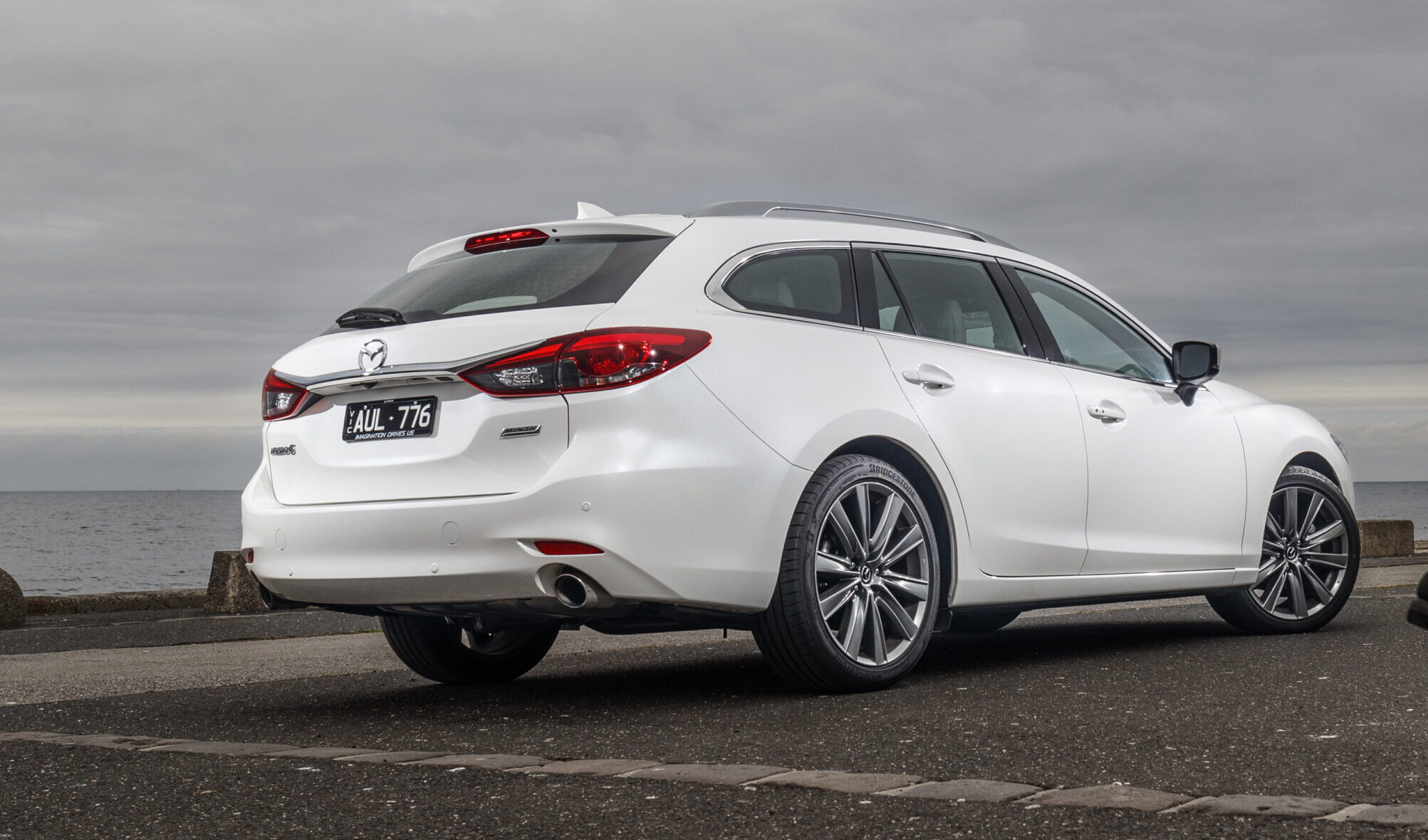
It wasn’t to last though. A decade ago, the writing was already on the wall for the traditional sedan and wagon. The CX-5 was selling five times the numbers of the Mazda6, and the Hiroshima company had backup in the form of the CX-3 and the big CX-9. Buyer tastes had changed decisively, but since when did fashion have a great deal with common sense?
Wheels attempted to make sense of what was then a fairly crowded field when it threw the Mazda6 GT sedan in against nine rivals in the September 2016 issue, but it became clear that we’d chosen the least competent 6 to pitch into the fray. While the diesel wagon excelled, the GT sedan’s big wheels, long wheelbase and so-so economy of its atmo 2.5-litre petrol engine saw it only manage seventh spot. Nathan Ponchard even reckoned the diesel was more refined than the petrol unit.
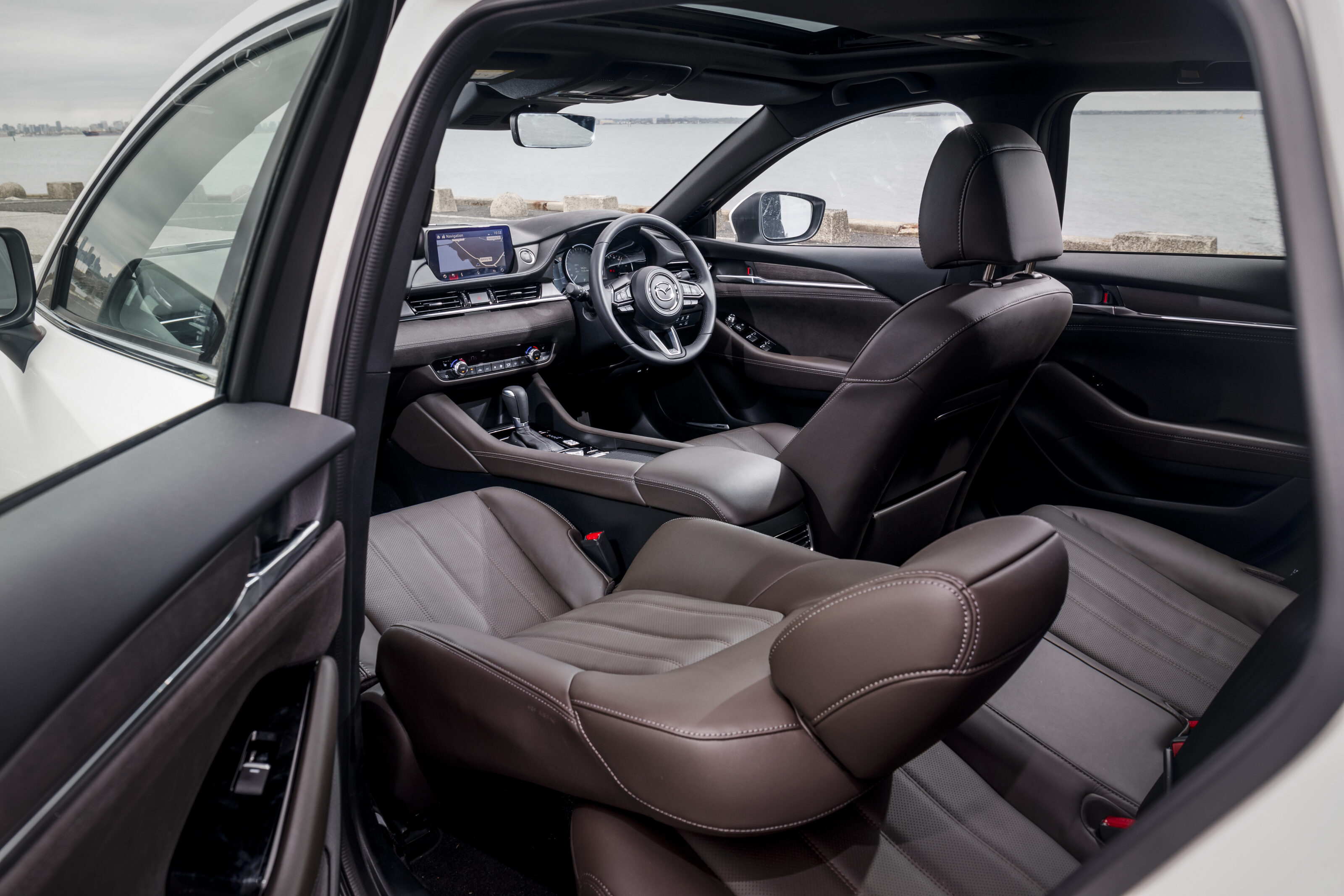
So it’s fair to say that the GL-generation Mazda6 was a car that was extremely spec-dependent. Many of the medium-rangers that we put it up against have, in the interim, taken their leave of the Aussie market. We can no longer buy a new Ford Mondeo, Subaru Liberty, Peugeot 508, Kia Optima, Volkswagen Passat or Holden Commodore. Timing was indeed against the Mazda6. Quite aside from the fact that it arrived just as SUVs were really starting to kick goals in the sales charts, its best version, the diesel, landed just as the market for diesel passenger cars started to plummet.
Mazda has introduced the all-electric Mazda EZ-6 in China – effectively a reskinned Deepal L07 – but the prospect of trying to sell a battery-electric sedan to Australian customers is not one that has tempted the local arm, despite some recent ‘wait and see’ statements. Even the range-extended electric version doesn’t look likely to make landfall. Scheduled to be called the Mazda6e when it goes on sale in Europe in mid-2025, it’ll get a larger 80kWh battery than the Chinese version, good for 552km WLTP range. Mazda needs all the NVES help it can get.
Mazda Australia’s hand was forced when the 6 was axed in Japan in quarter two of last year. Production continued, but hopes for a version with one of Mazda’s new-gen straight-six engines were dashed. After 22 years on sale in Australia, the final models have already left the lines, so dealer stock is your best bet if you want to snag one of the last of the last. It was a good car, but one that served as an unfortunate case study in getting your timing wrong. In truth, it probably deserved better.
The forgotten fast one
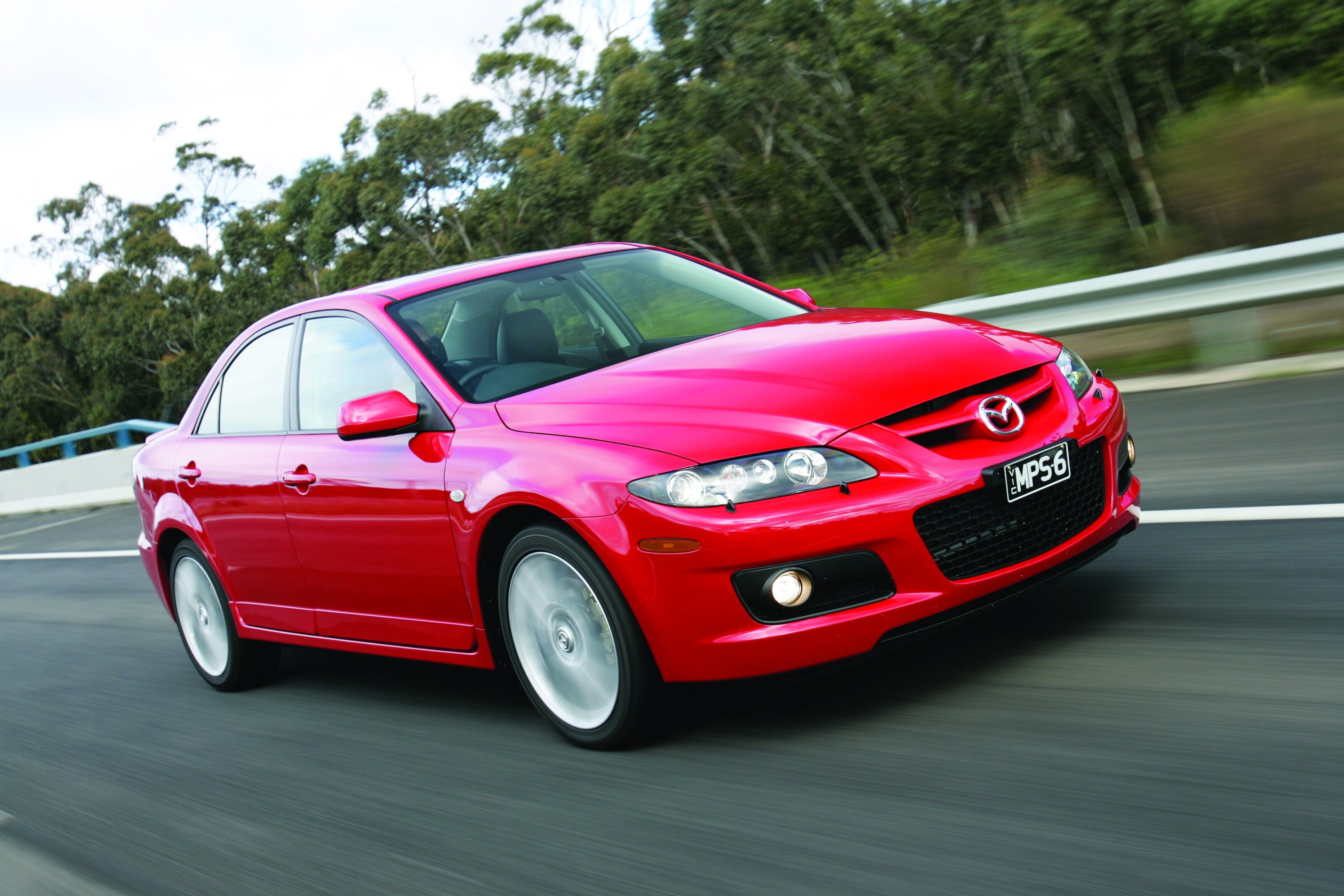
AN AWD SEDAN with a six-speed manual gearbox, 200kW at the crank, and a limited-slip differential sounds like a winner, but the Mazda6 MPS somehow seemed to emerge as less than the sum of its parts.
It saw off the Subaru Liberty GT in the only Wheels comparo it was entered into (Dec 2005), but reliability issues with the 2.3-litre four (rods, tubos, valvetrain) have seen many disappear from our roads.
Back in ’05, you’d have been better advised to sit on your $50k for a year and wait for the heavy-hitting VE Commodore SS.